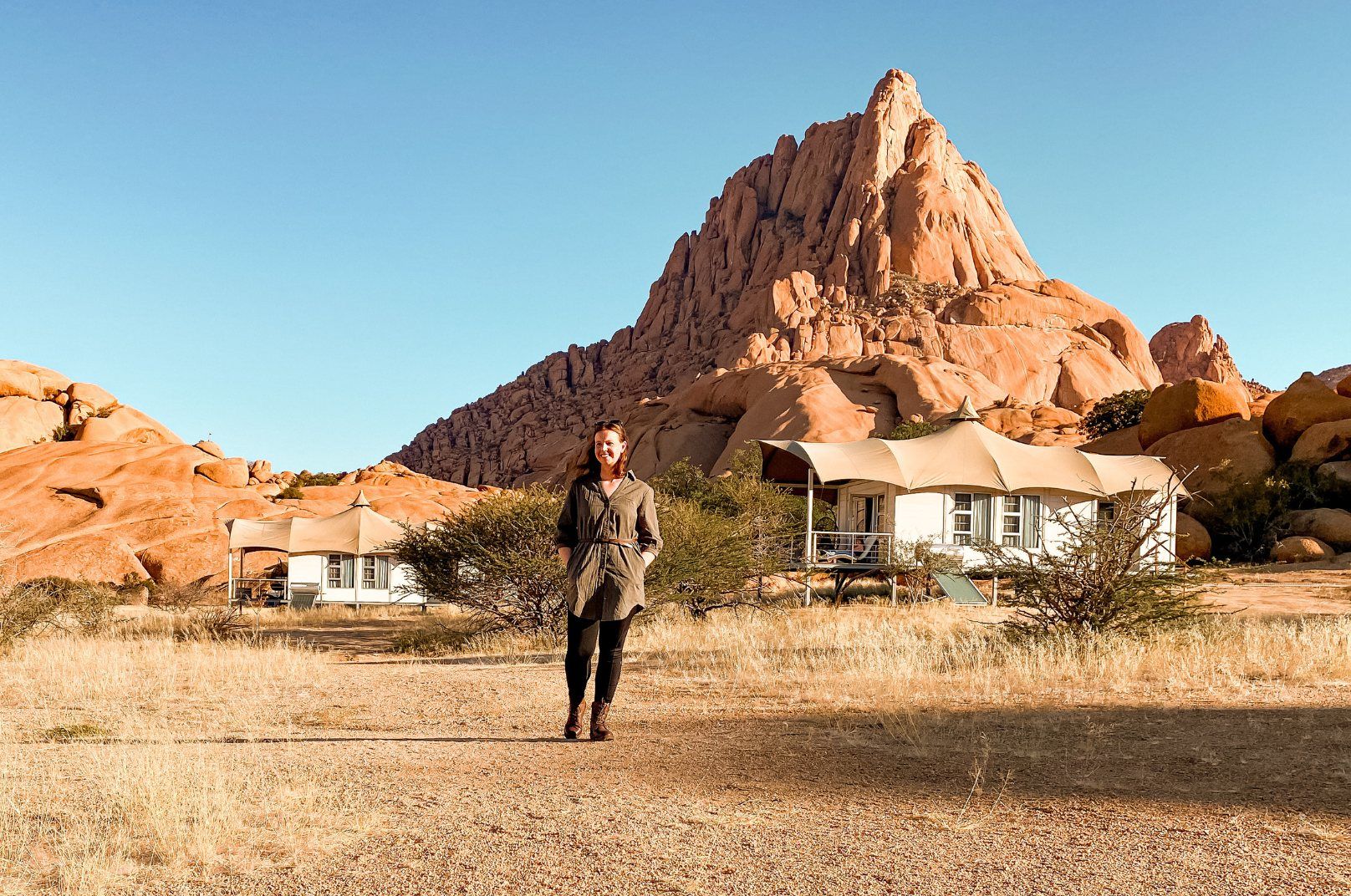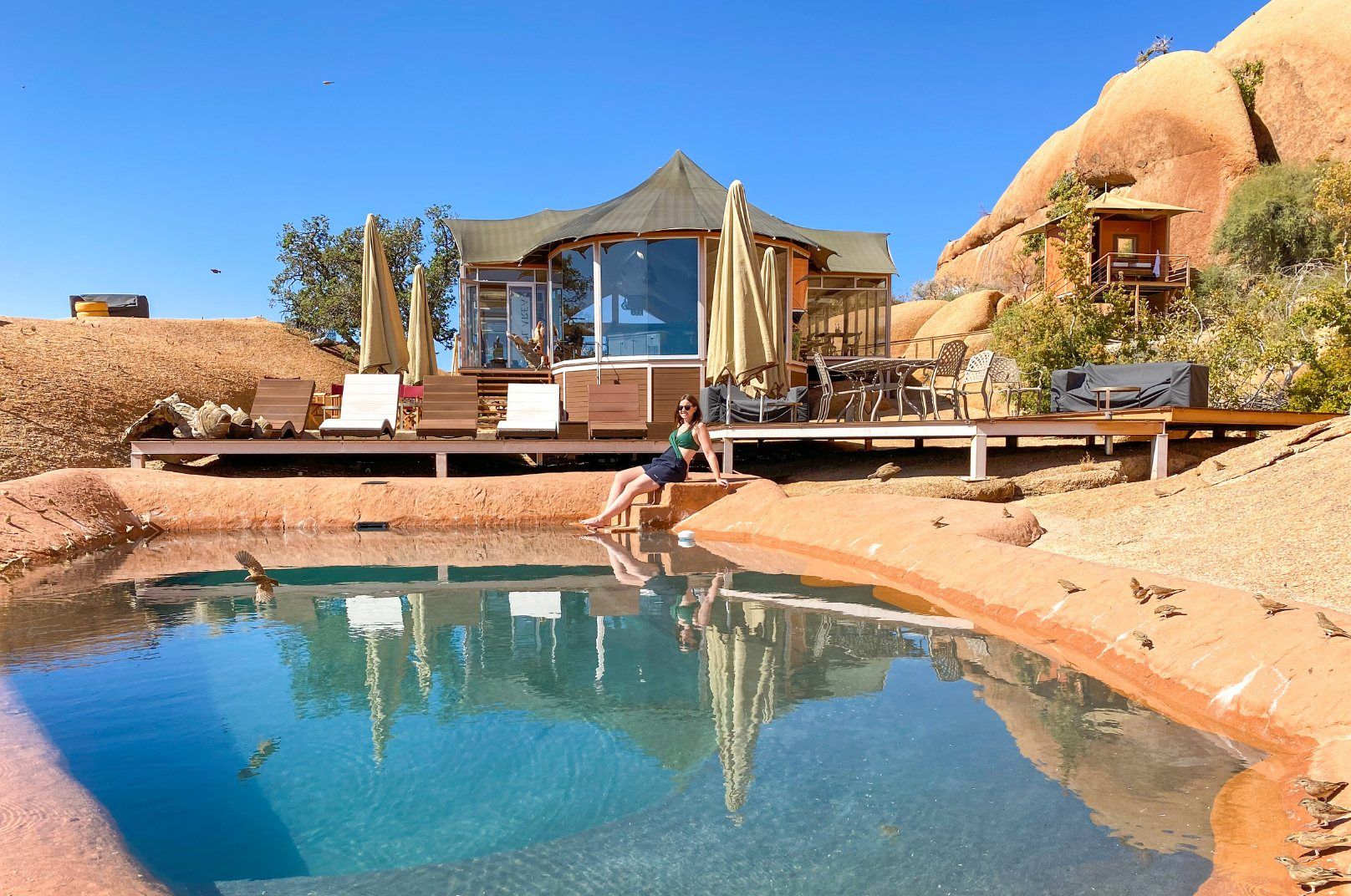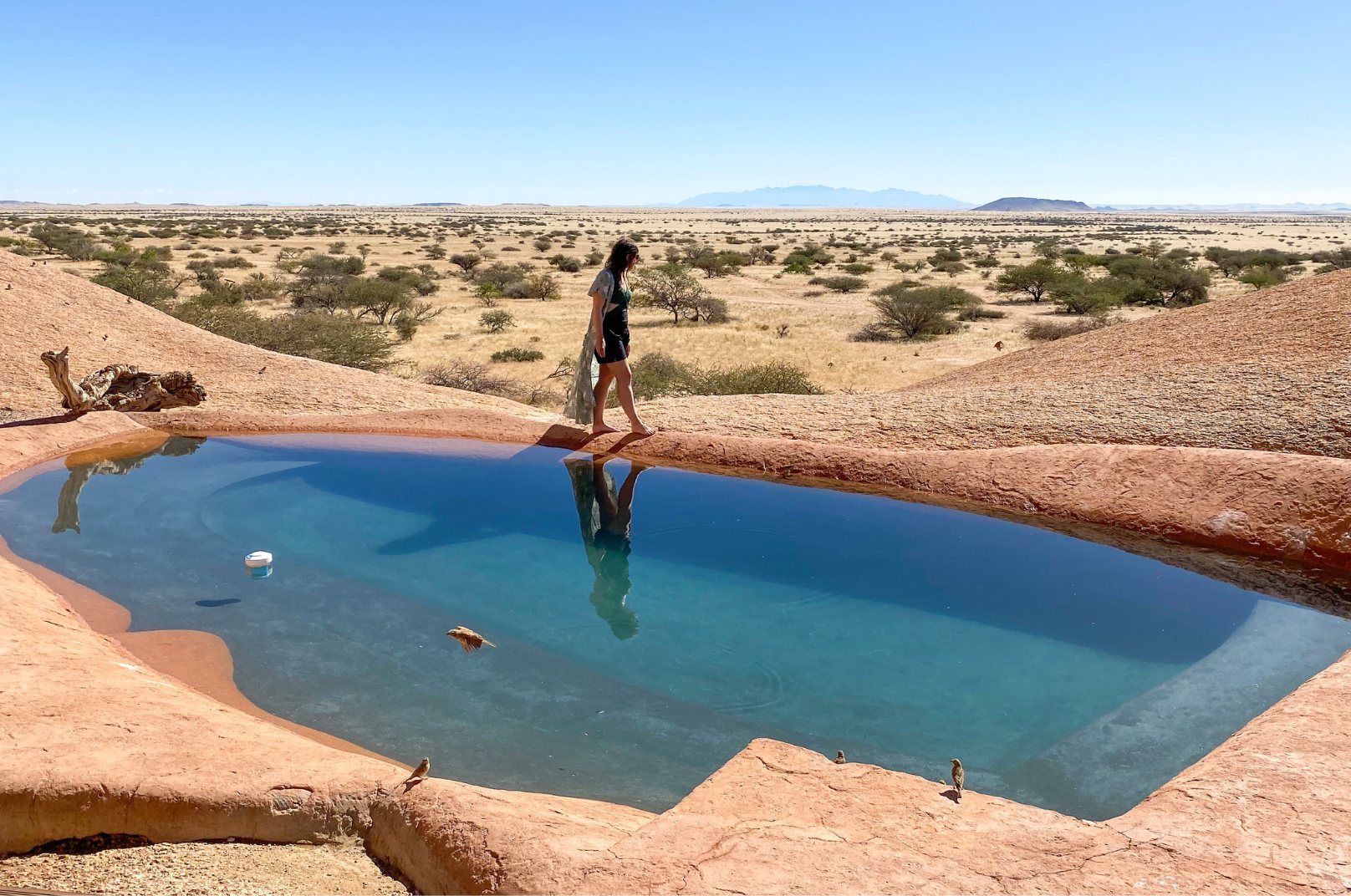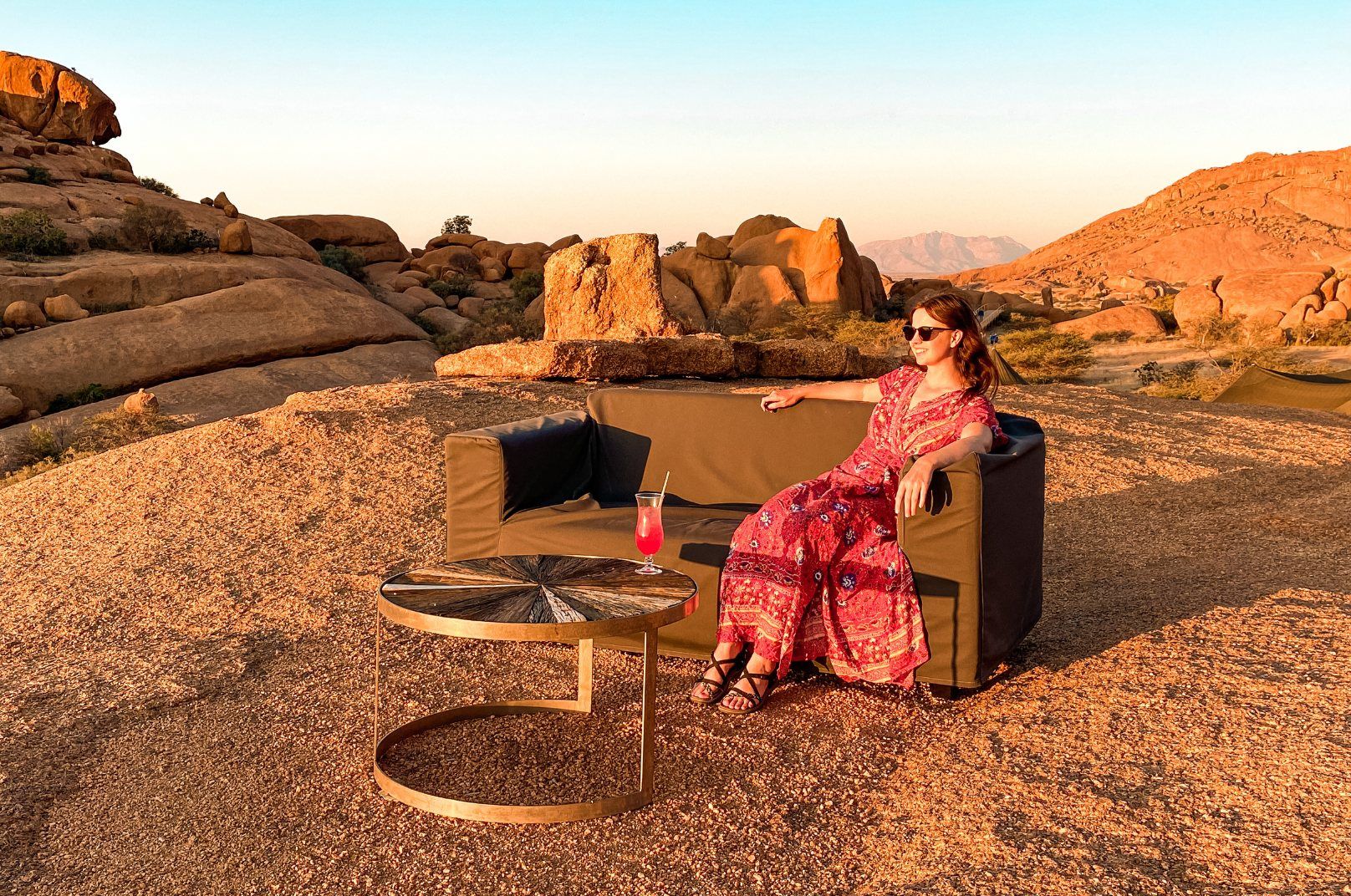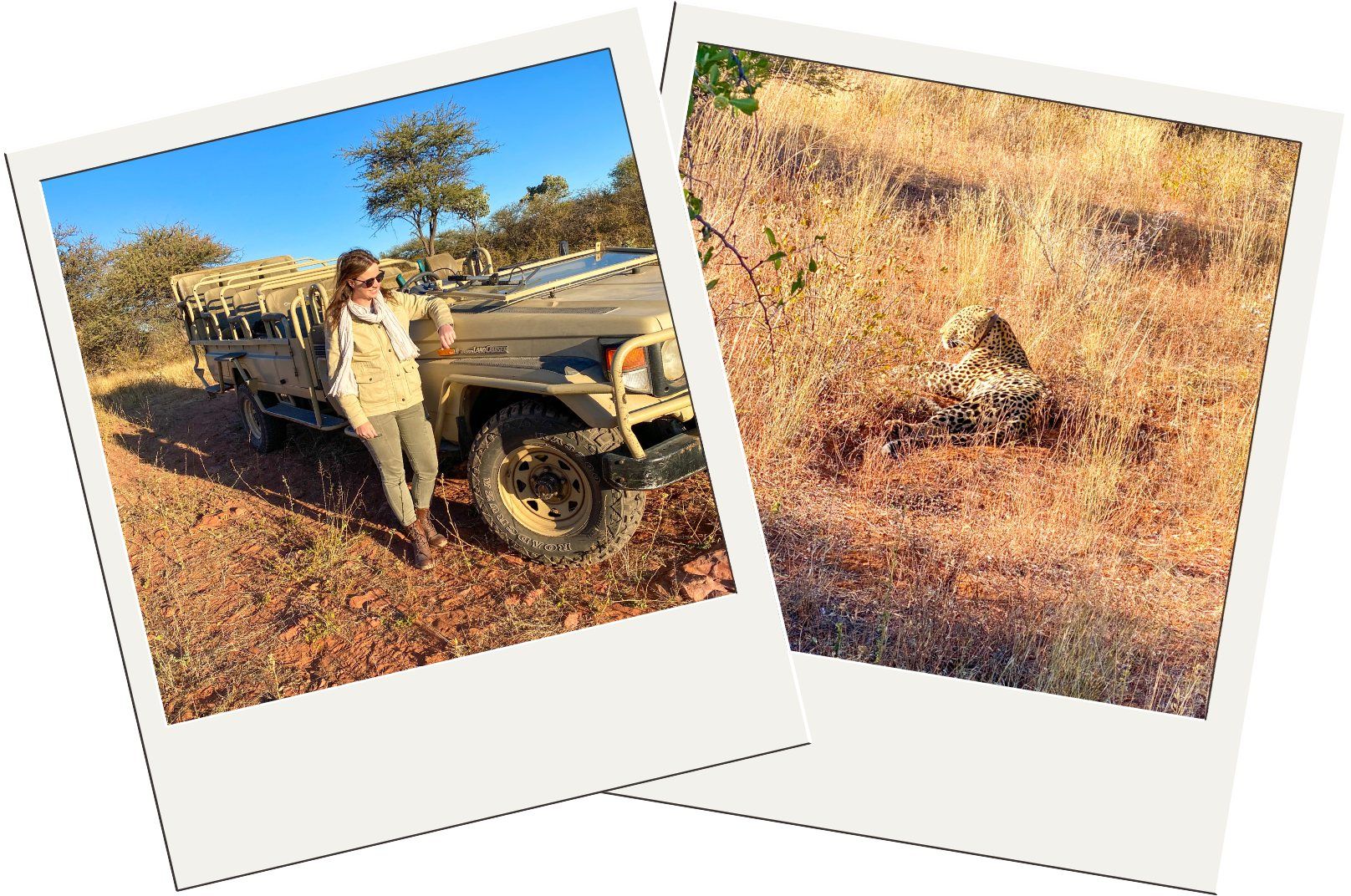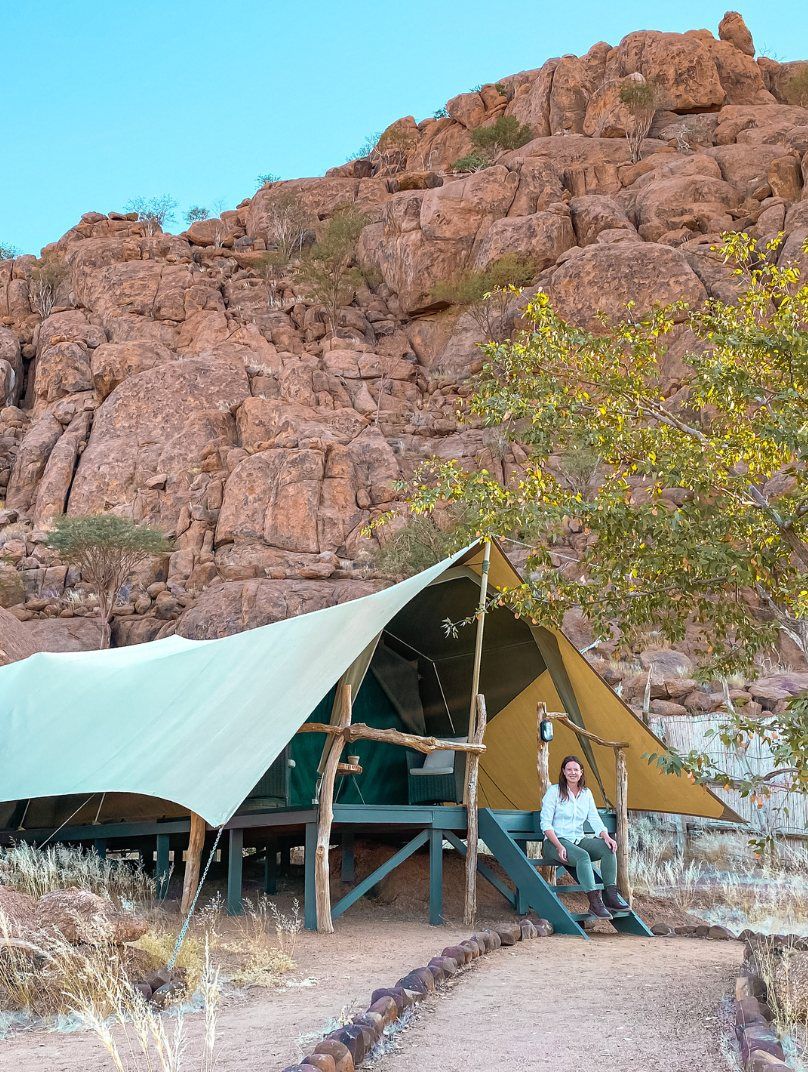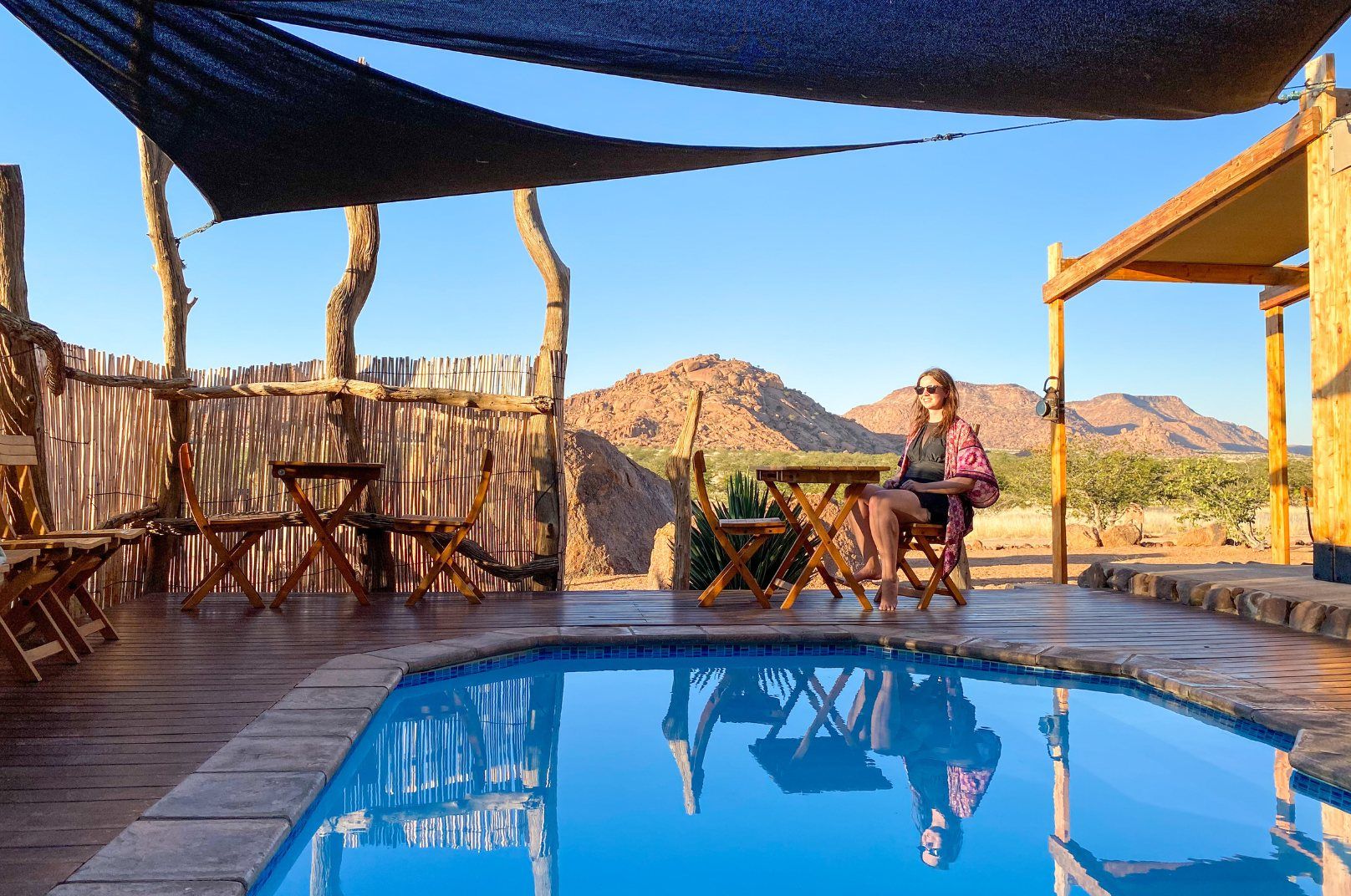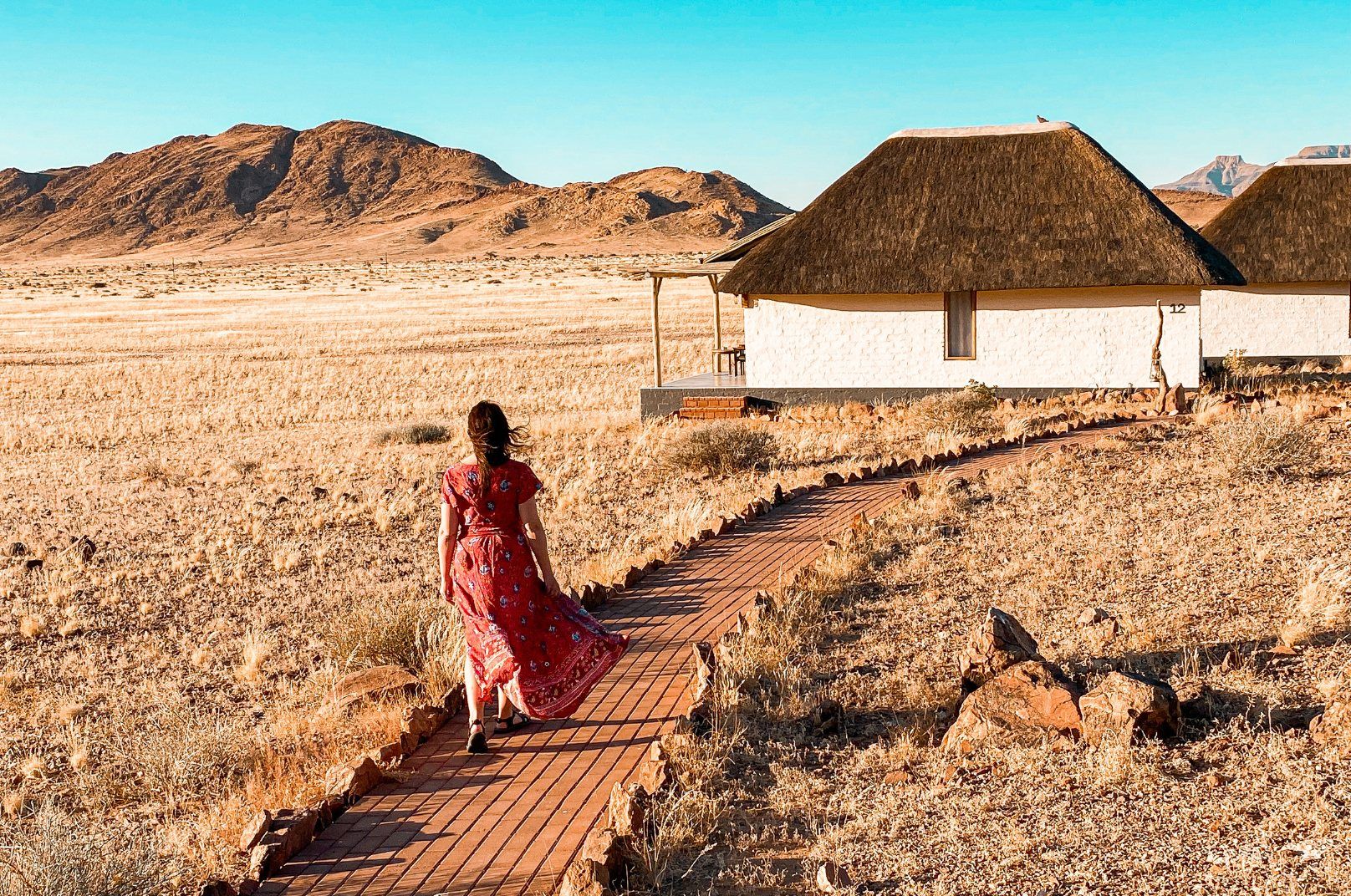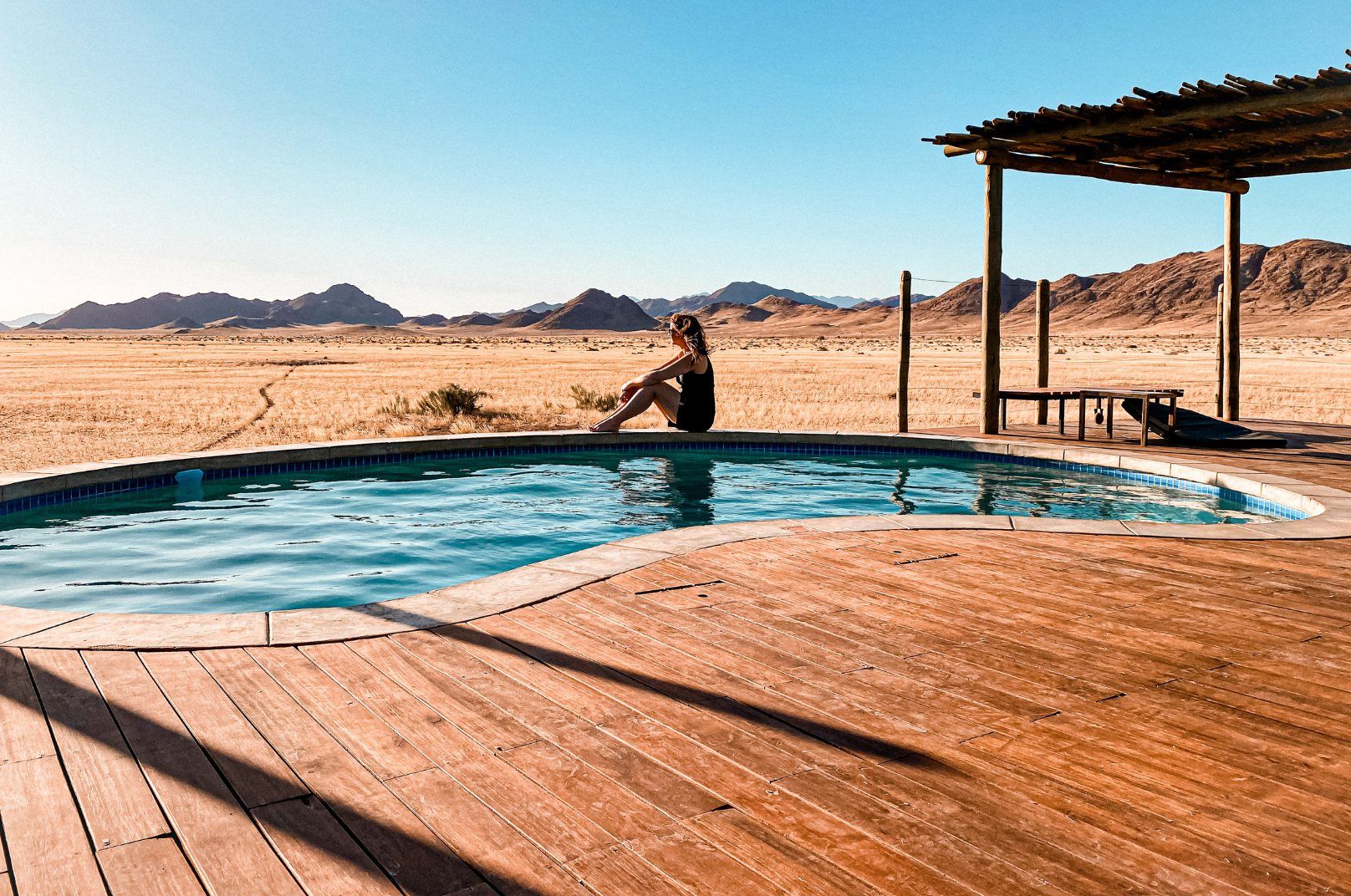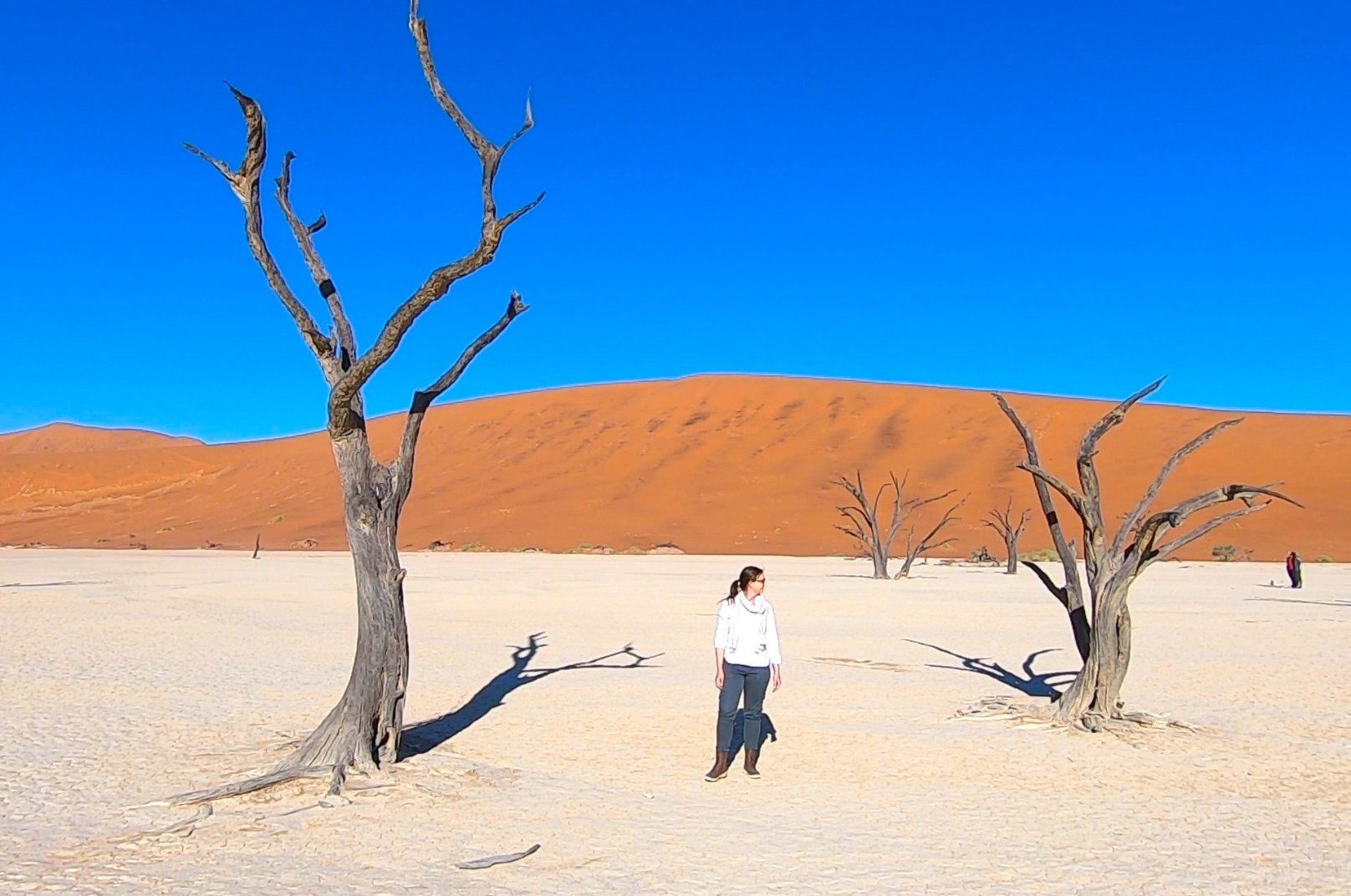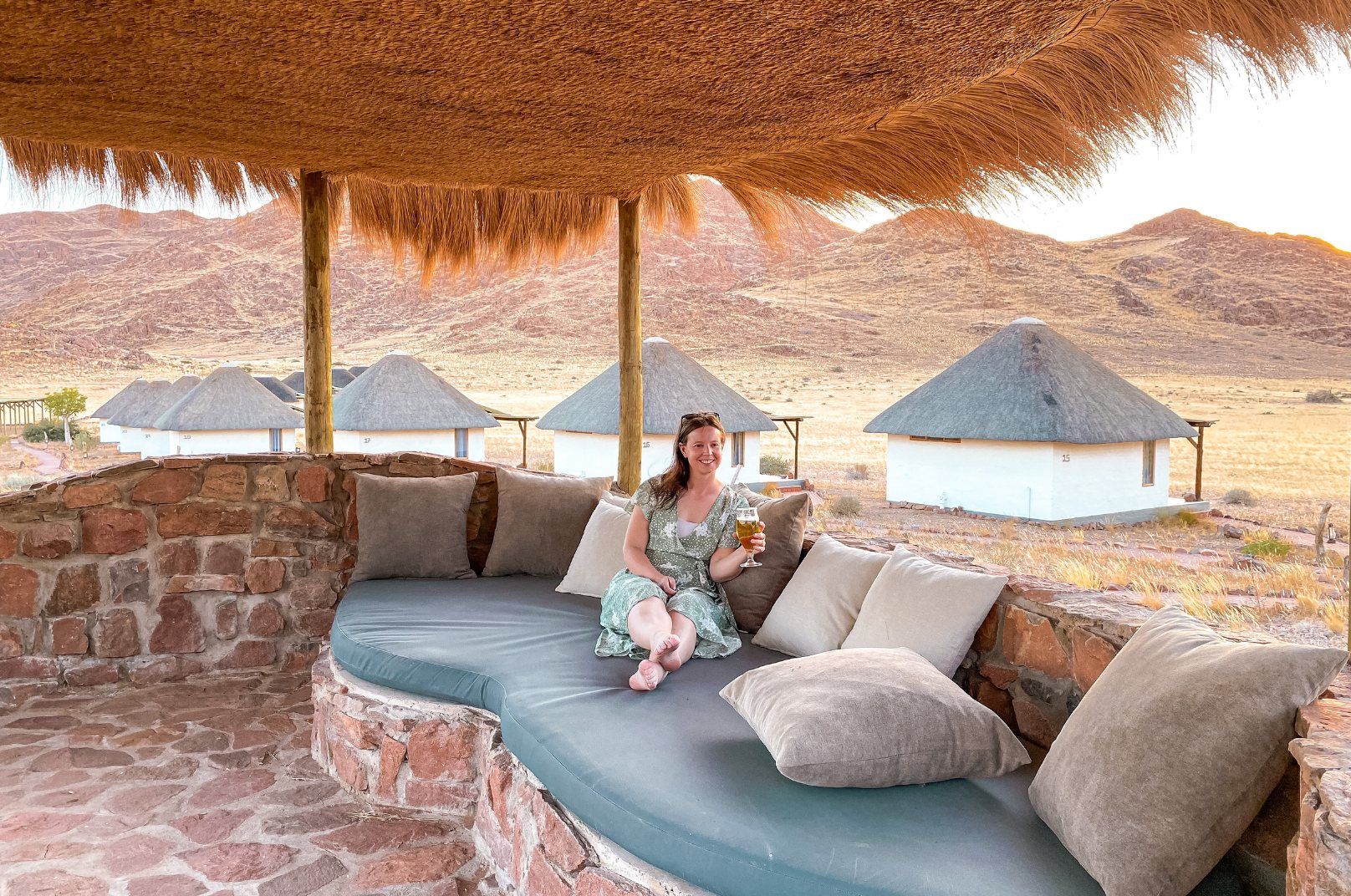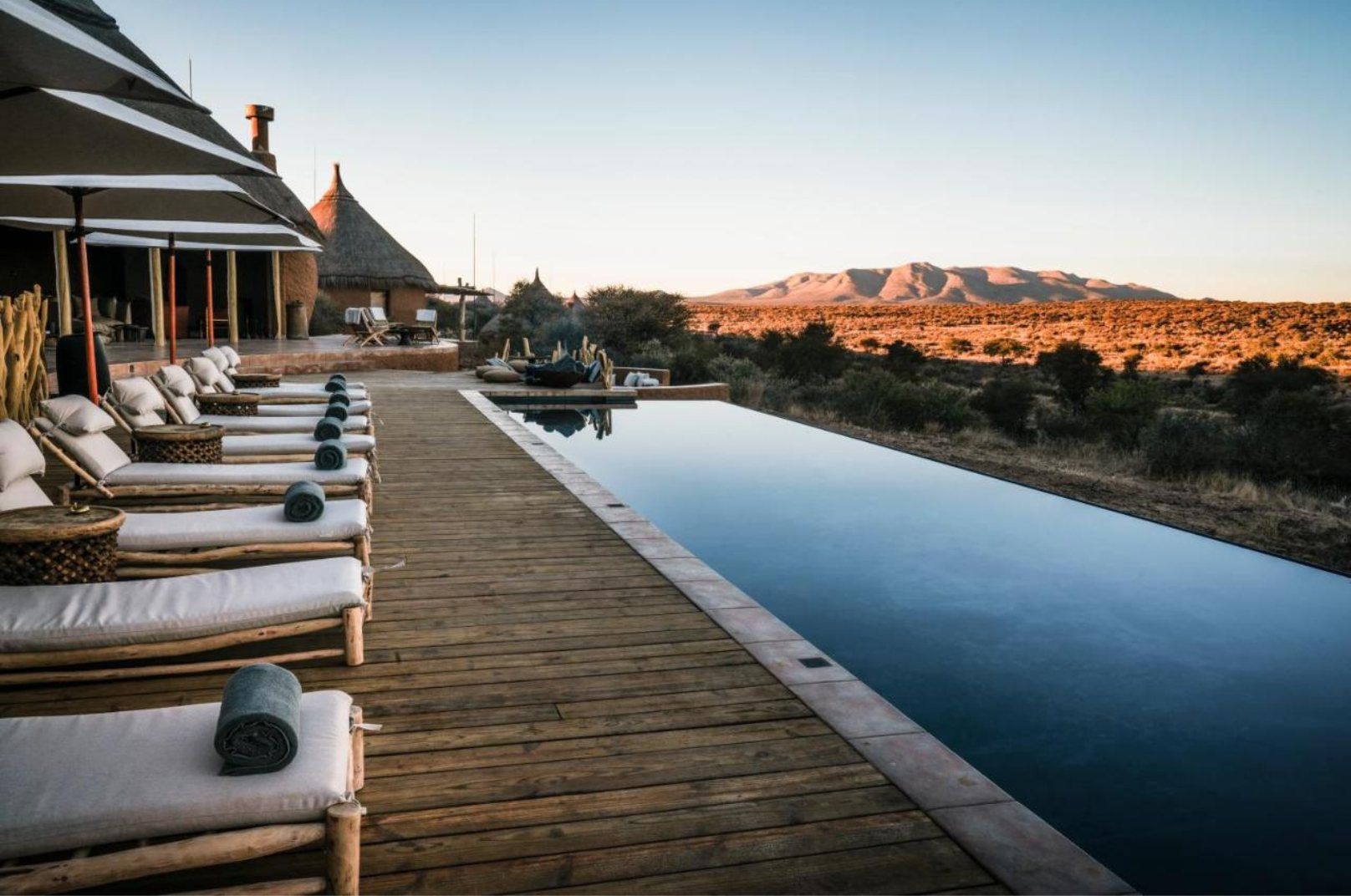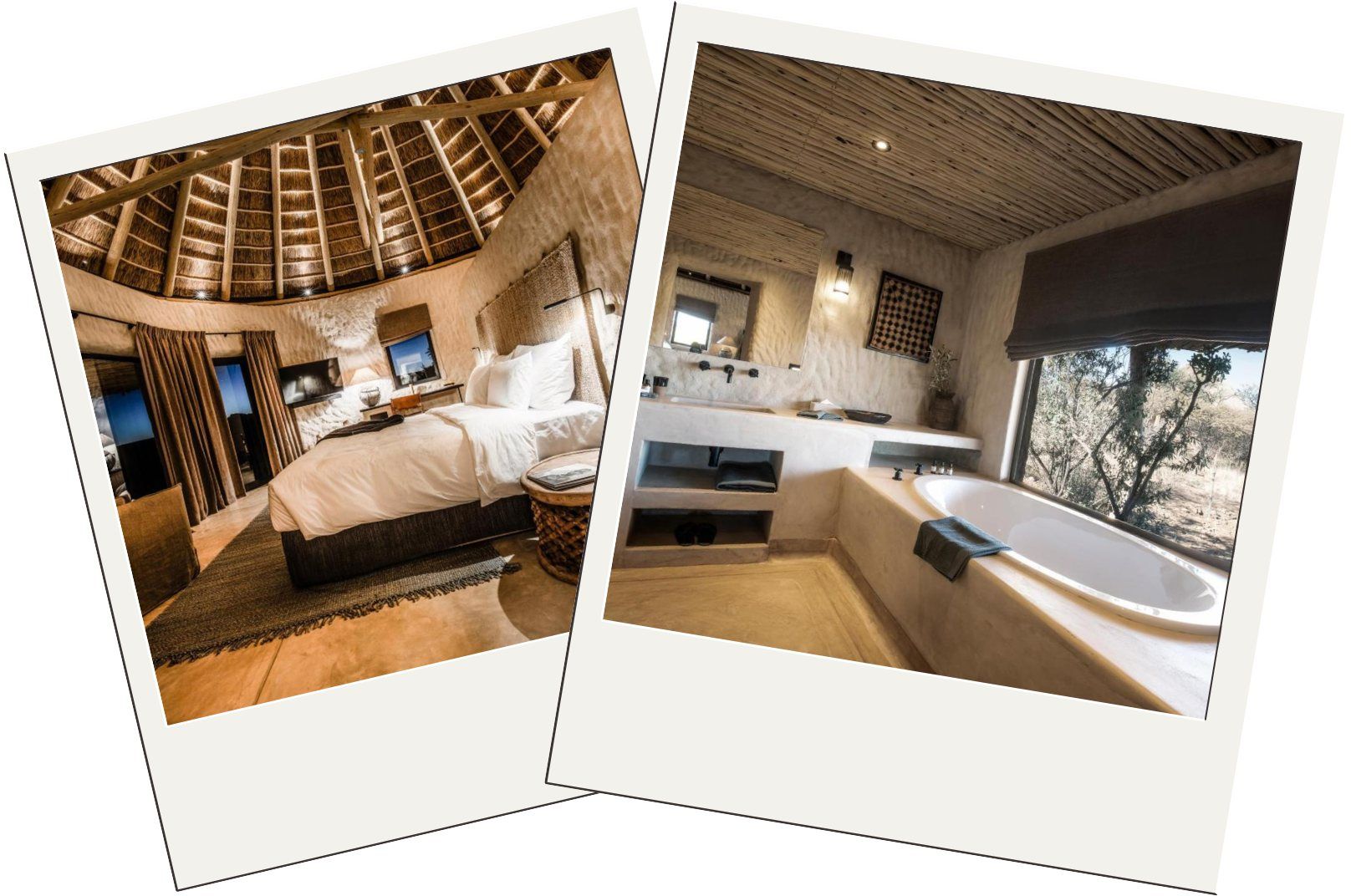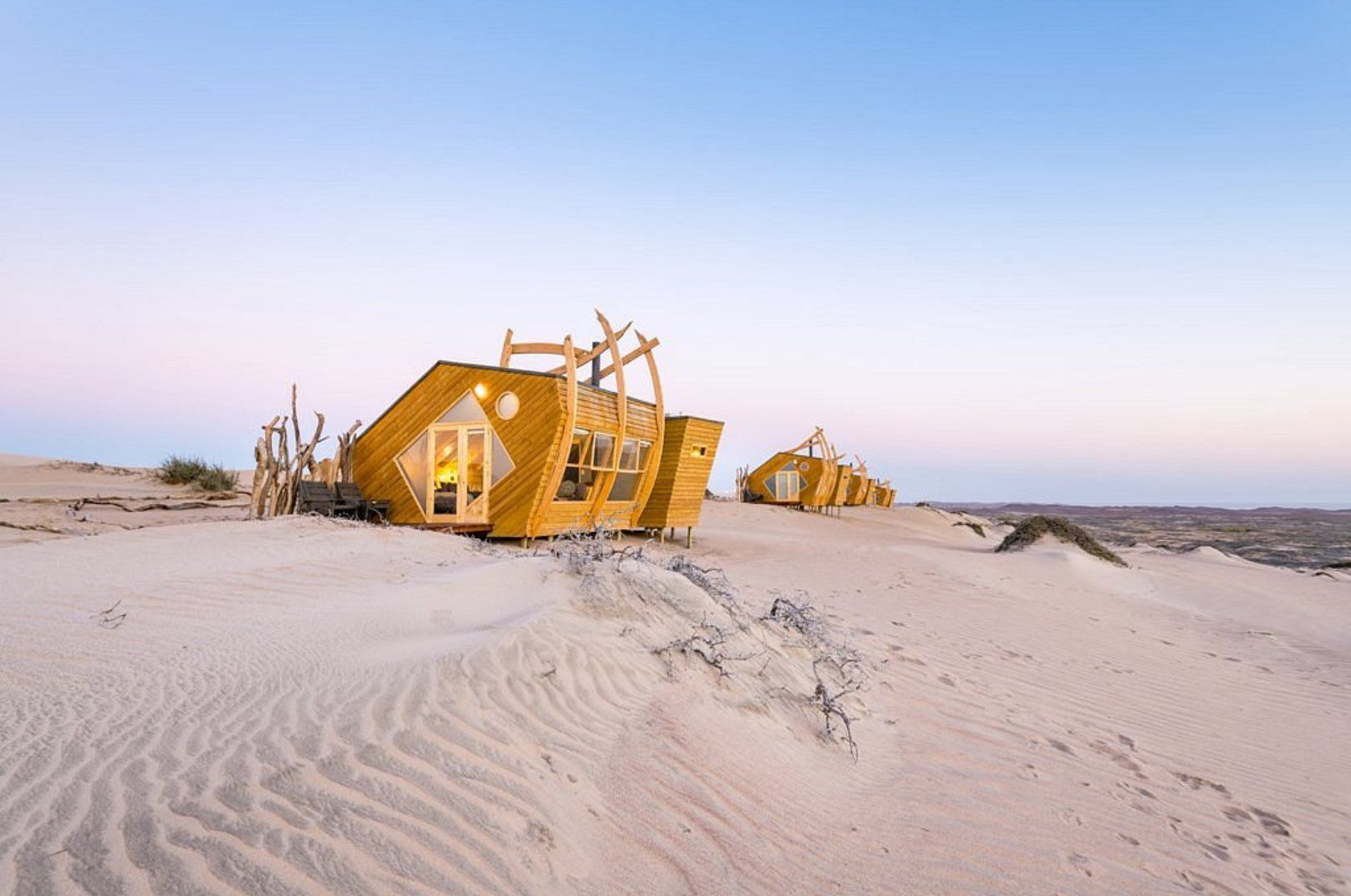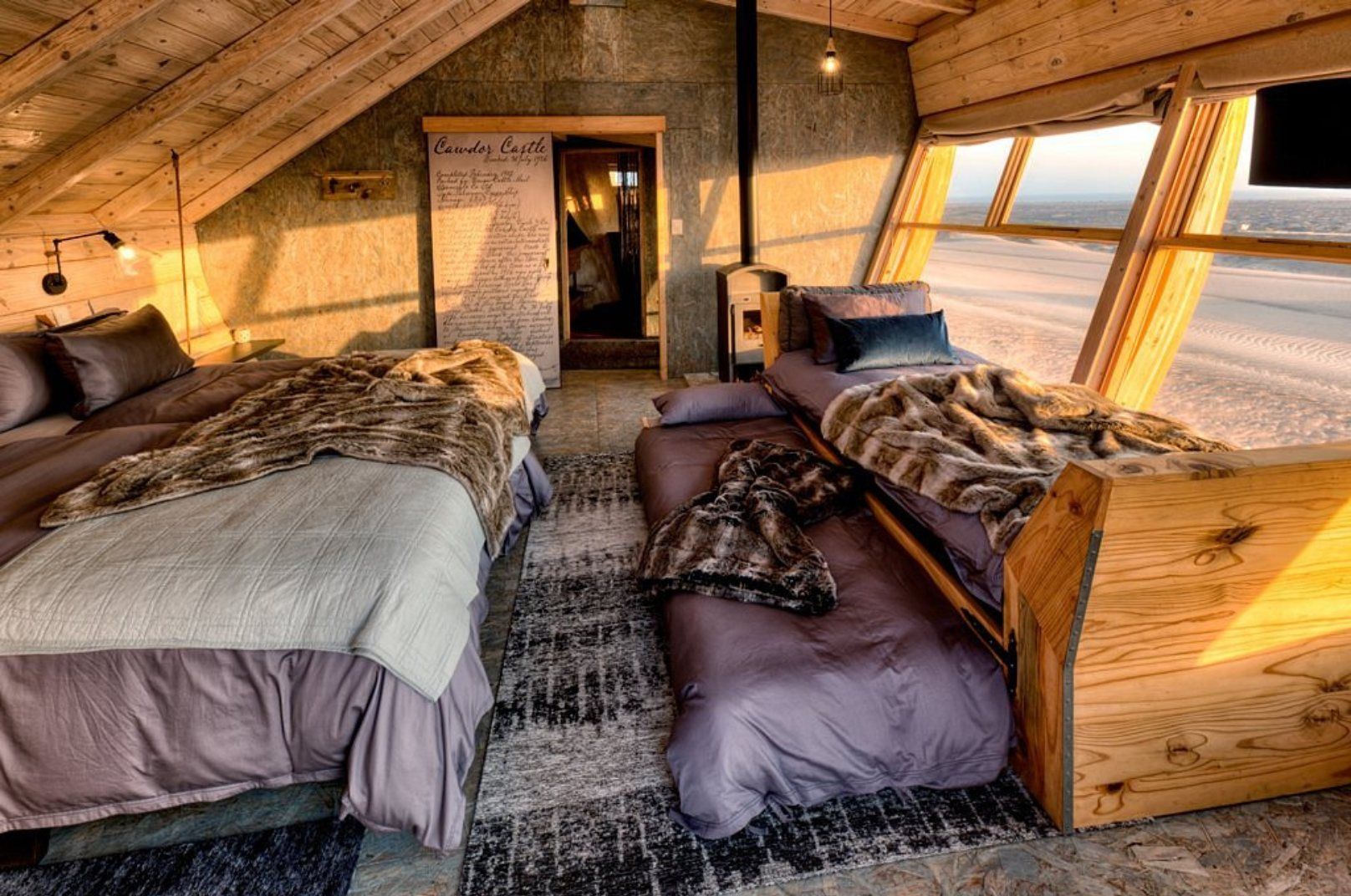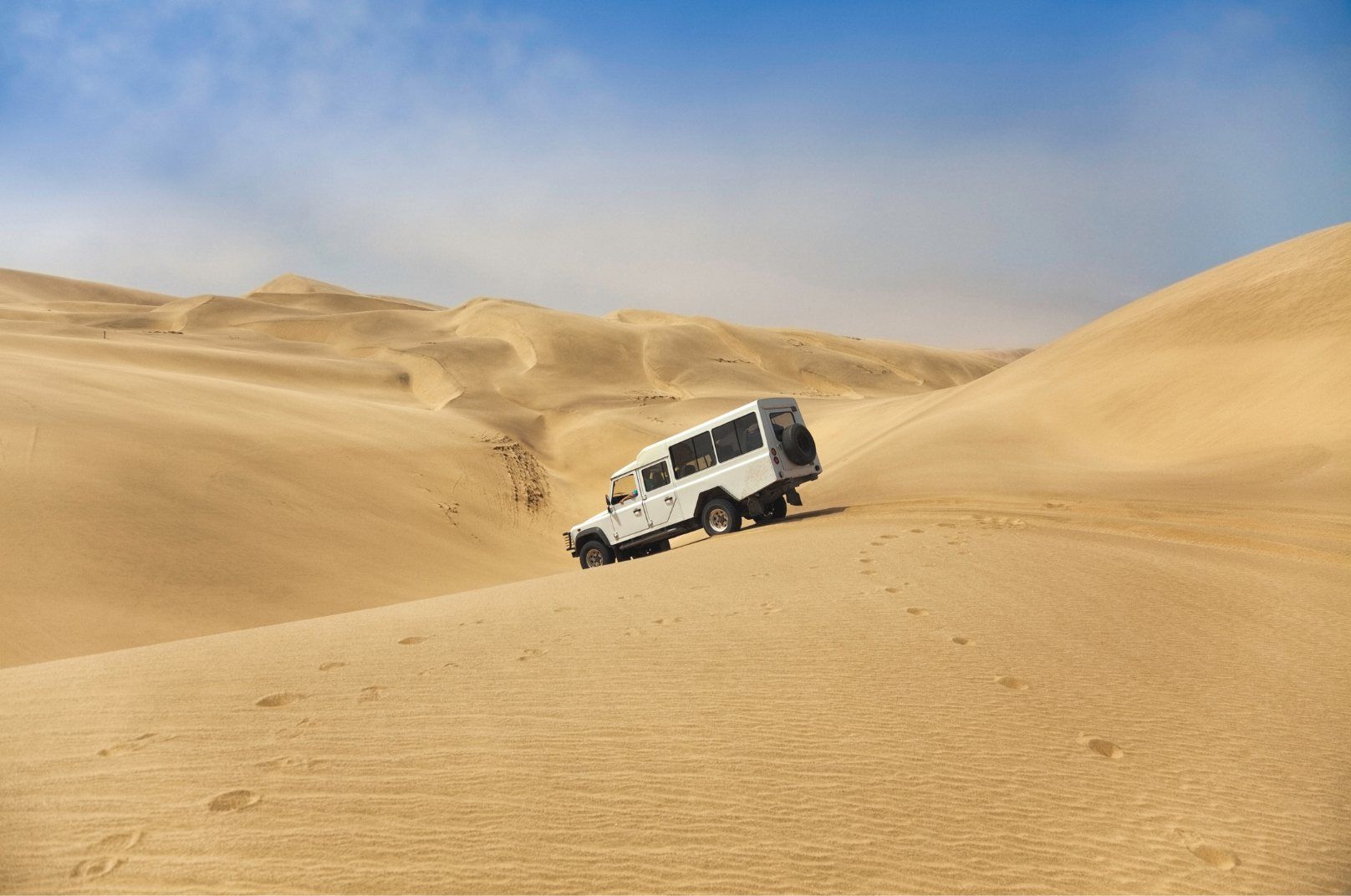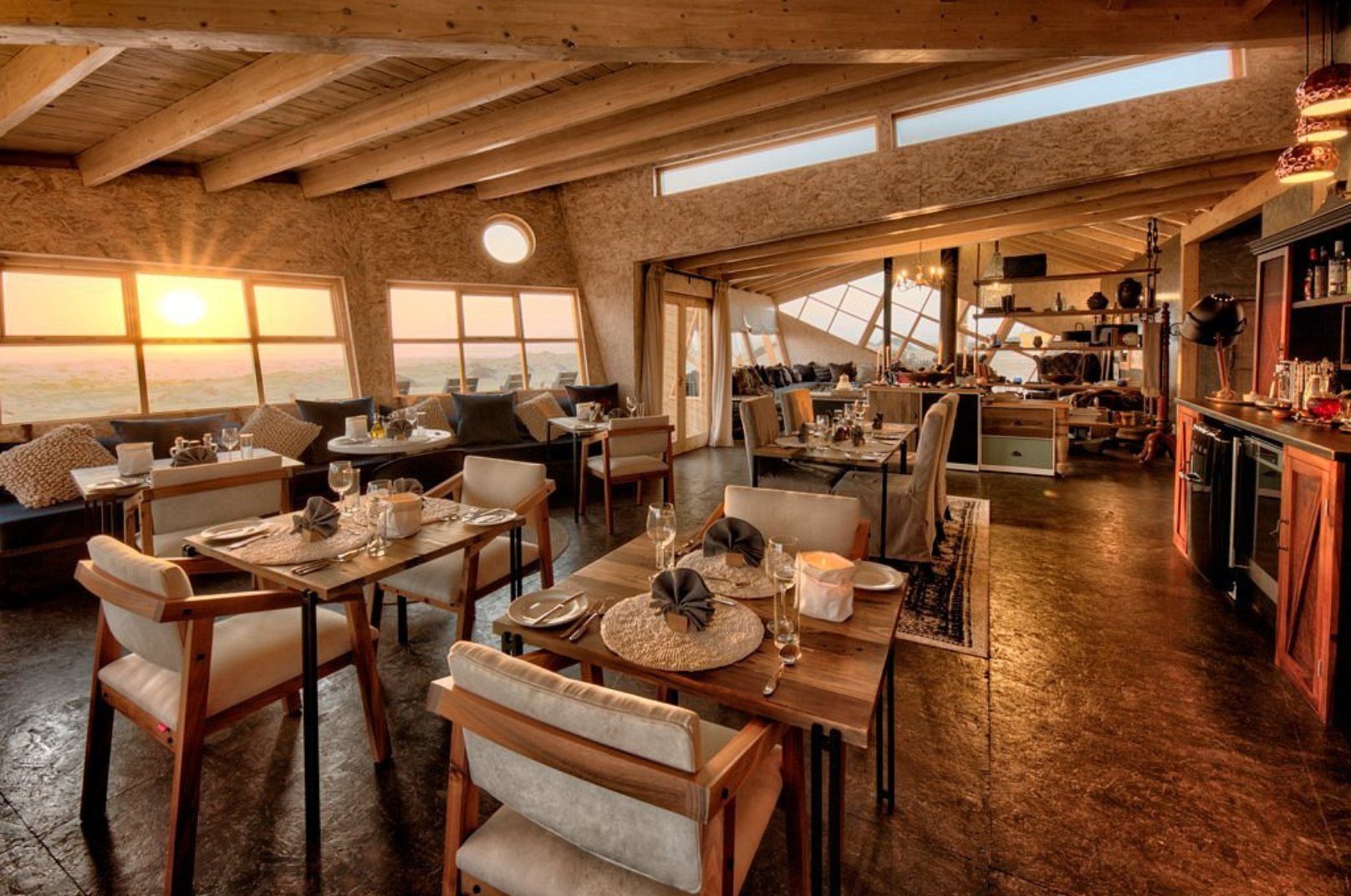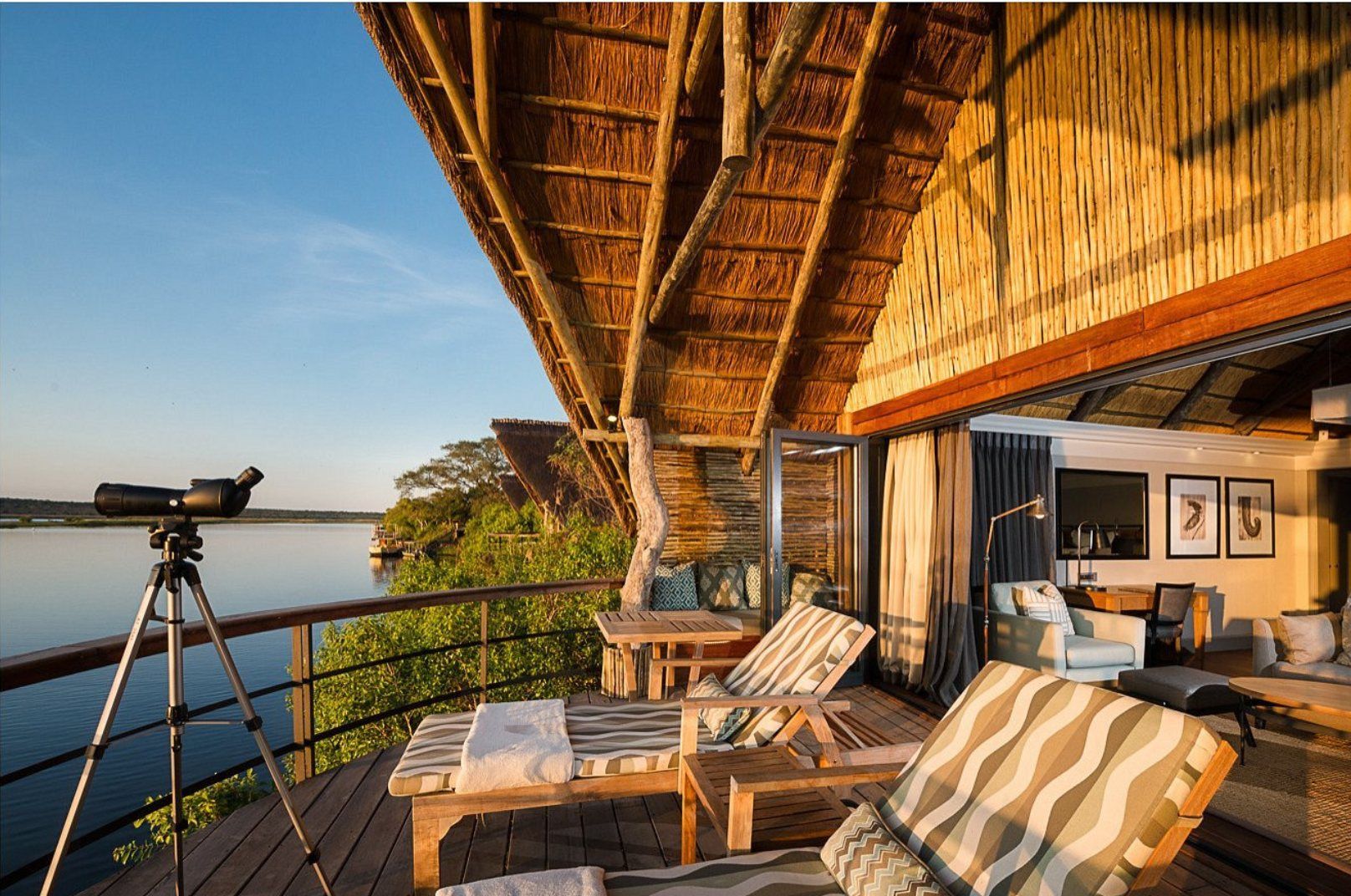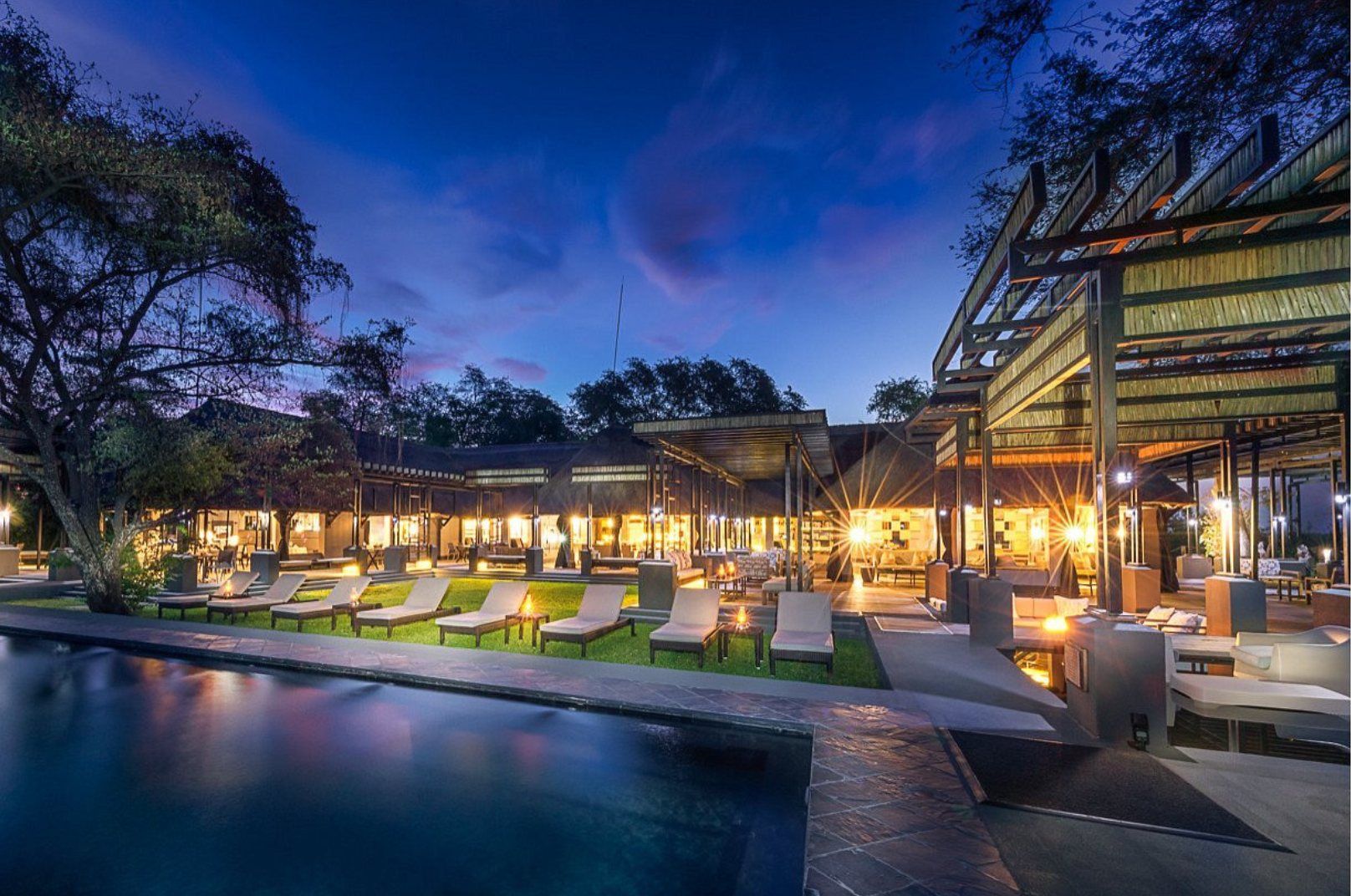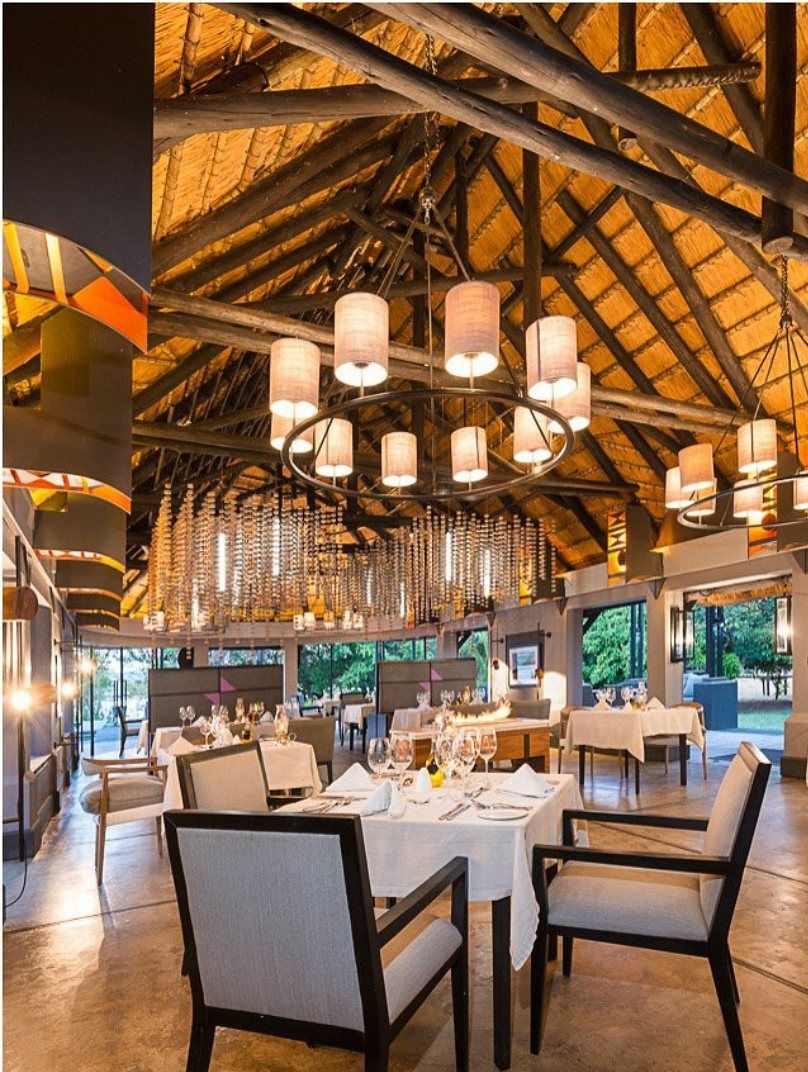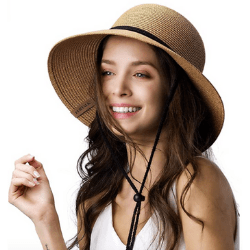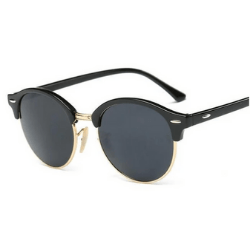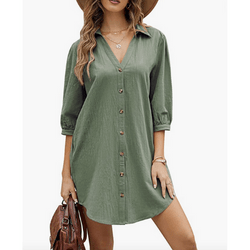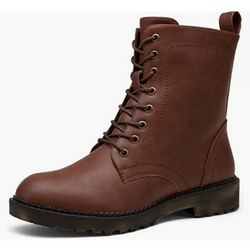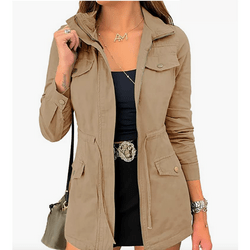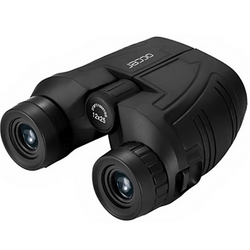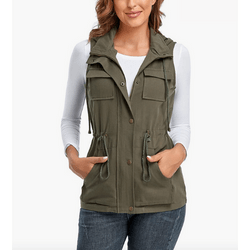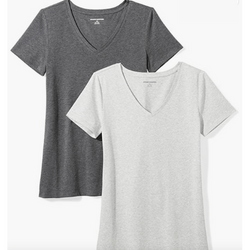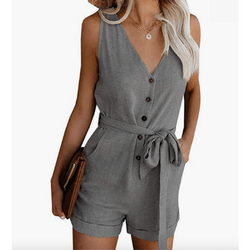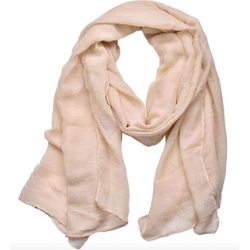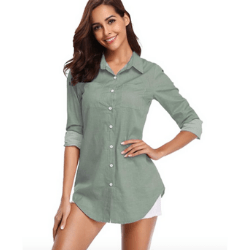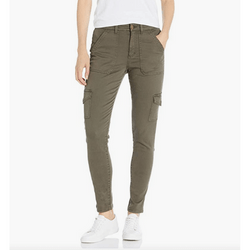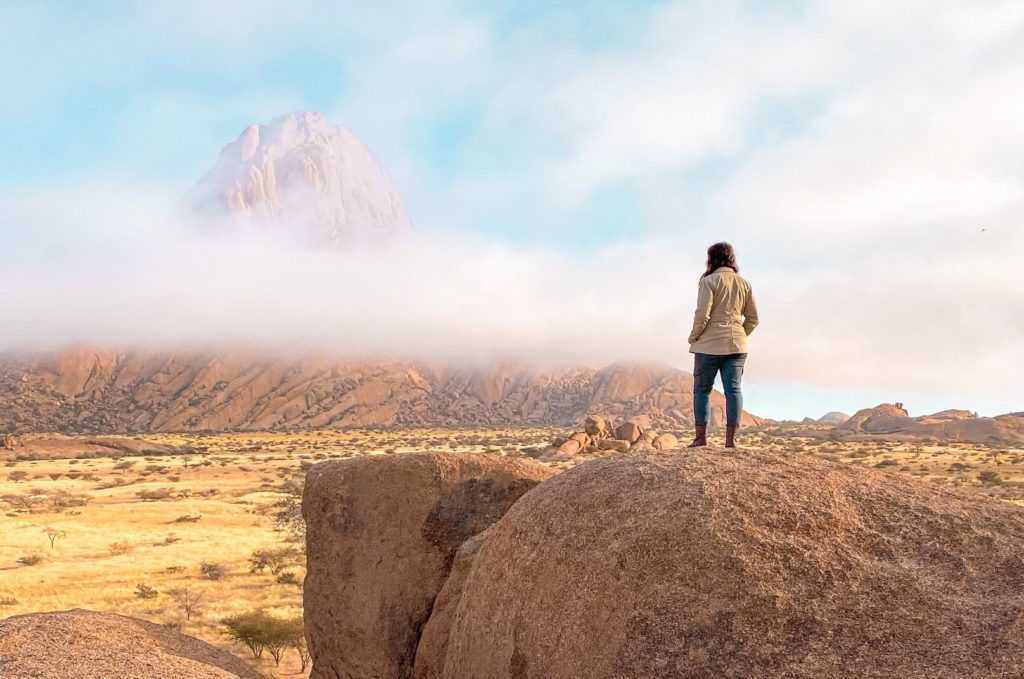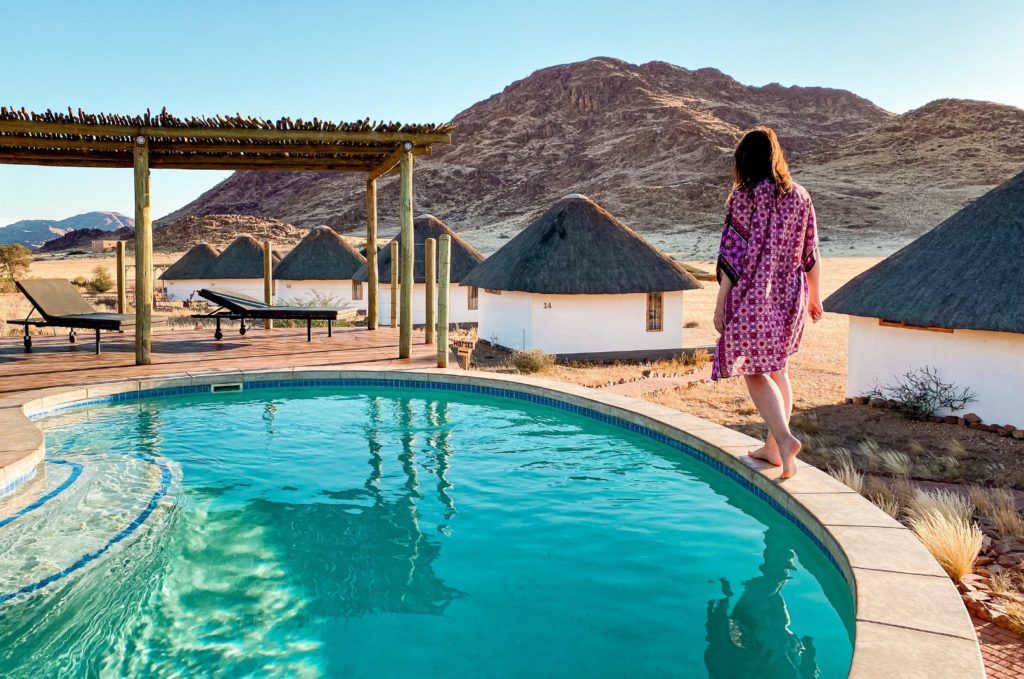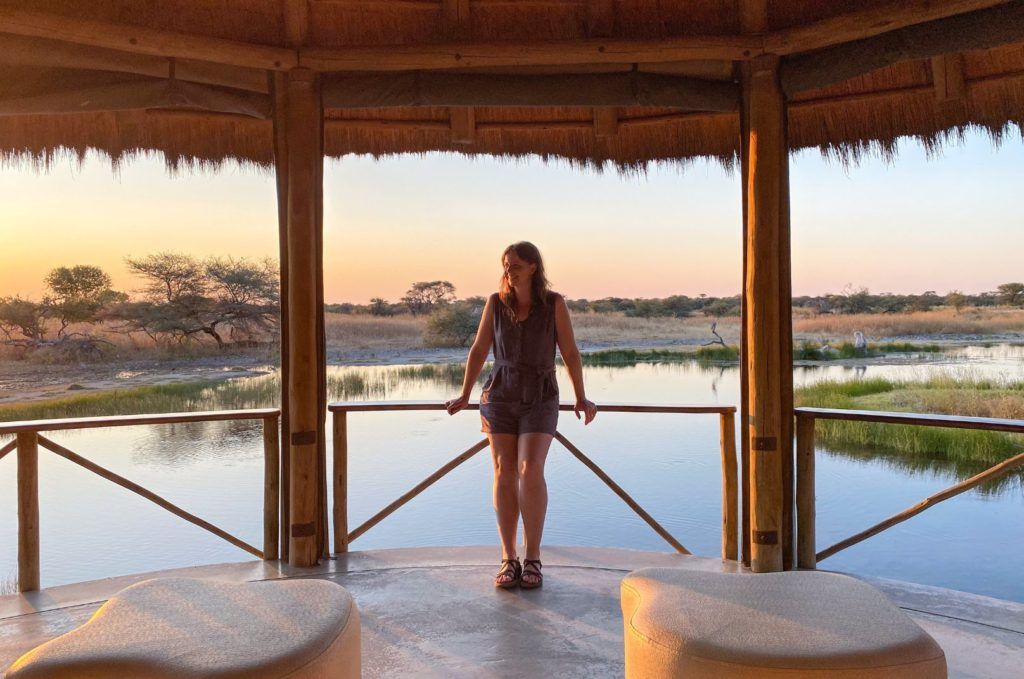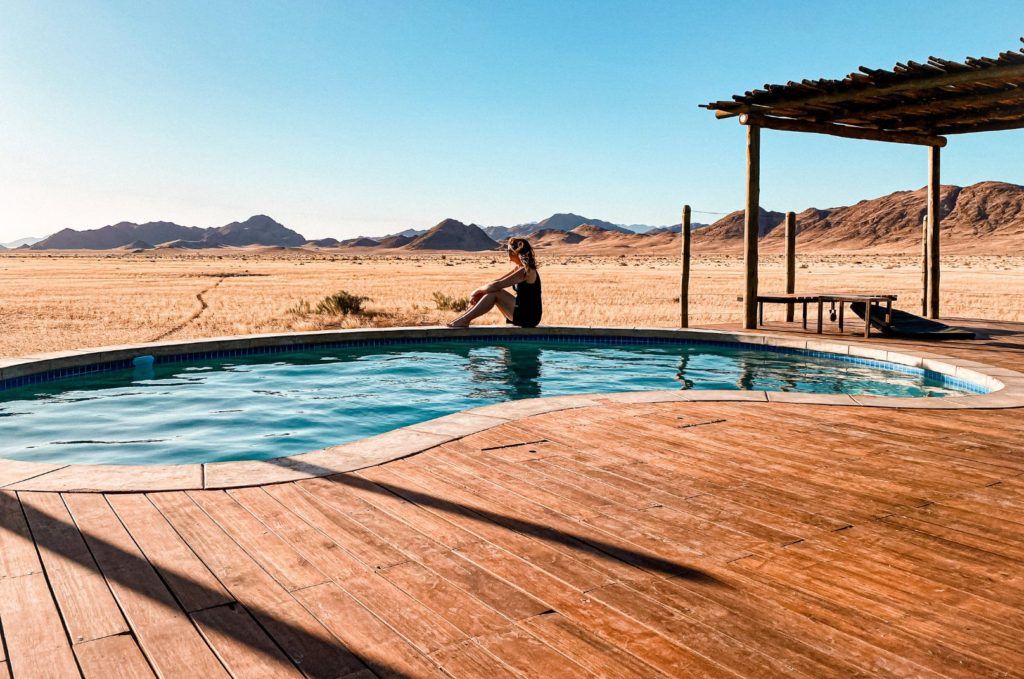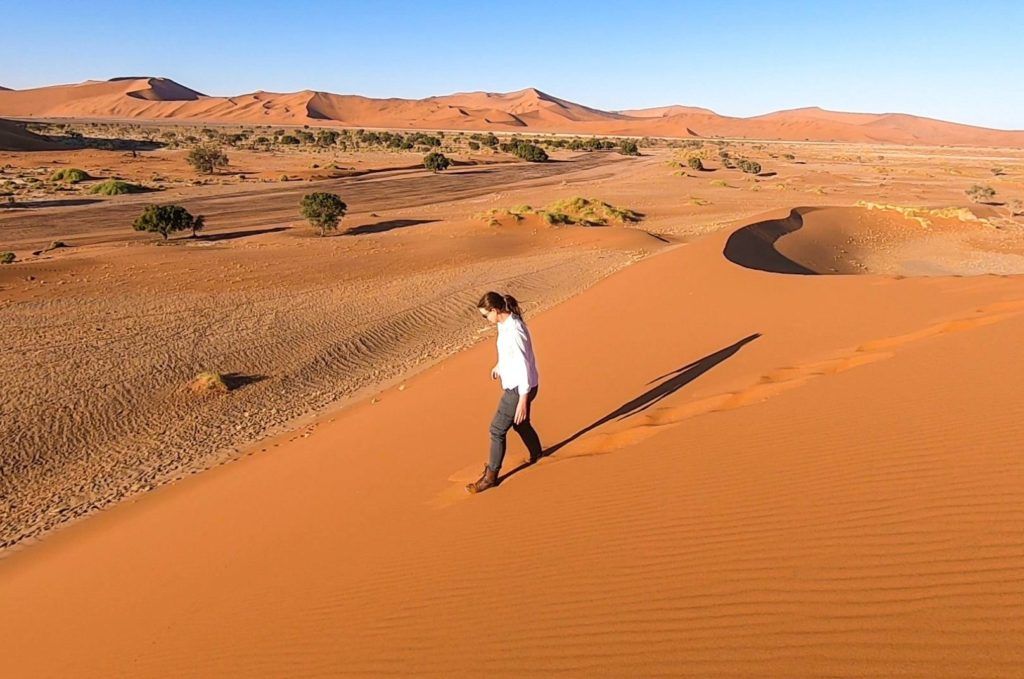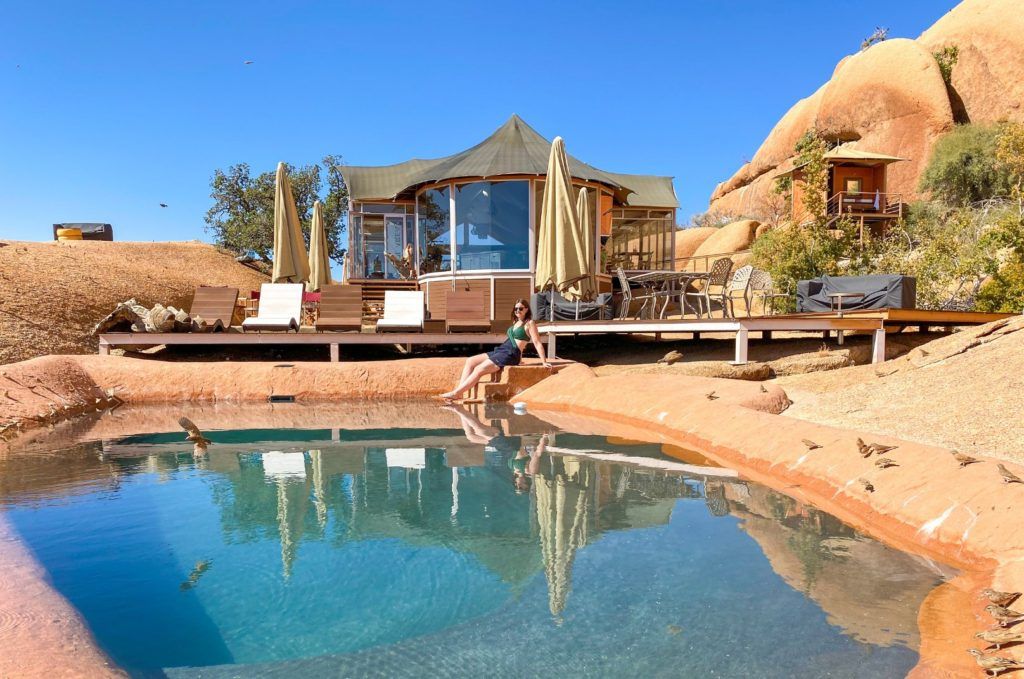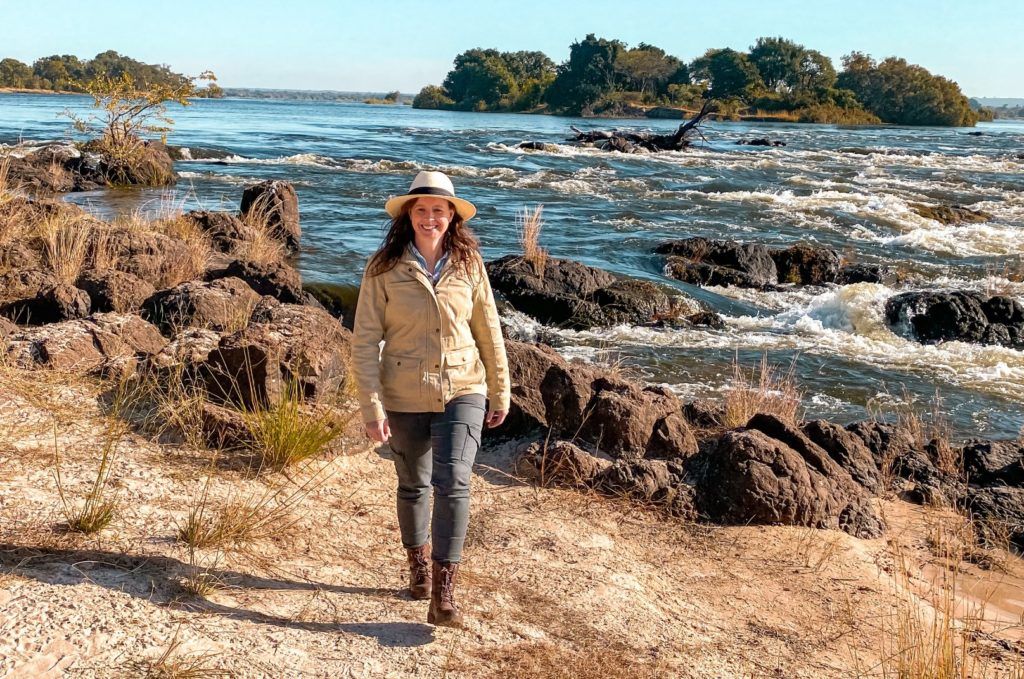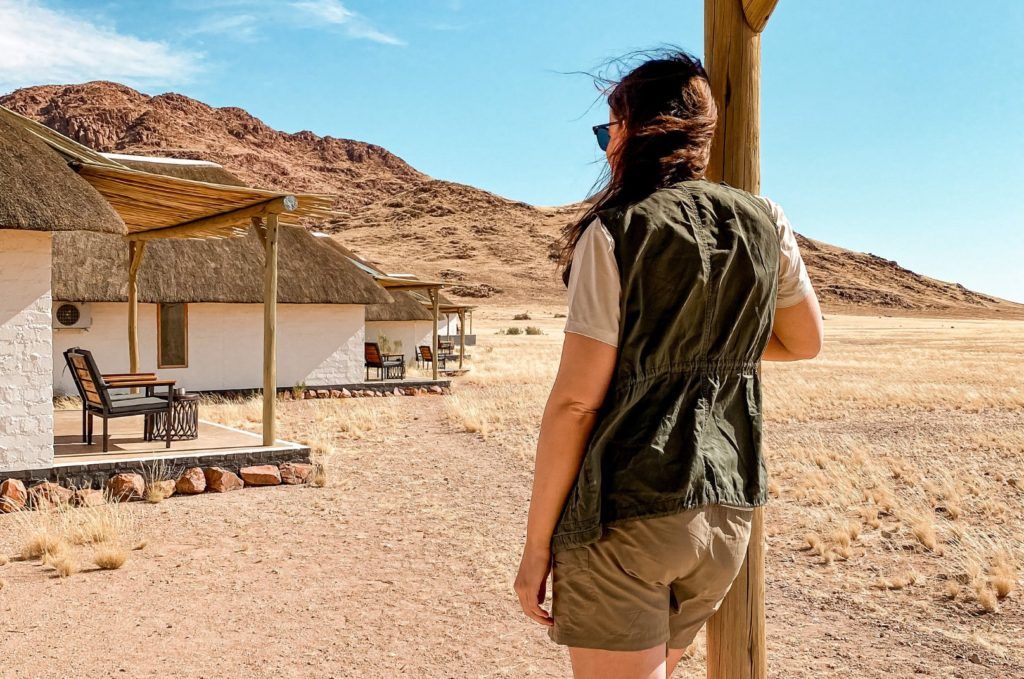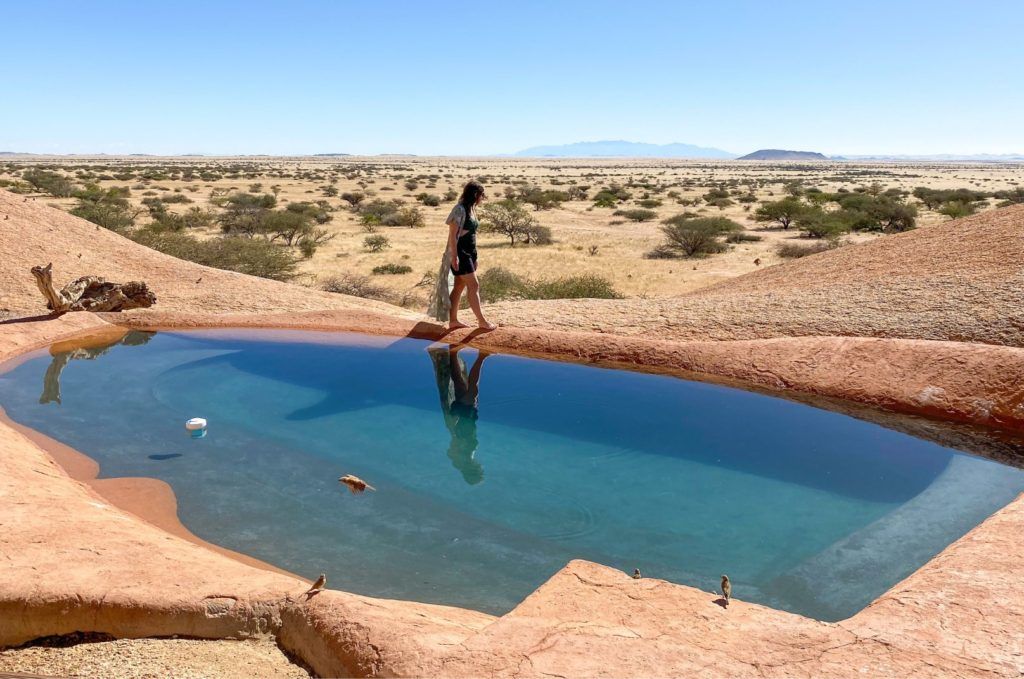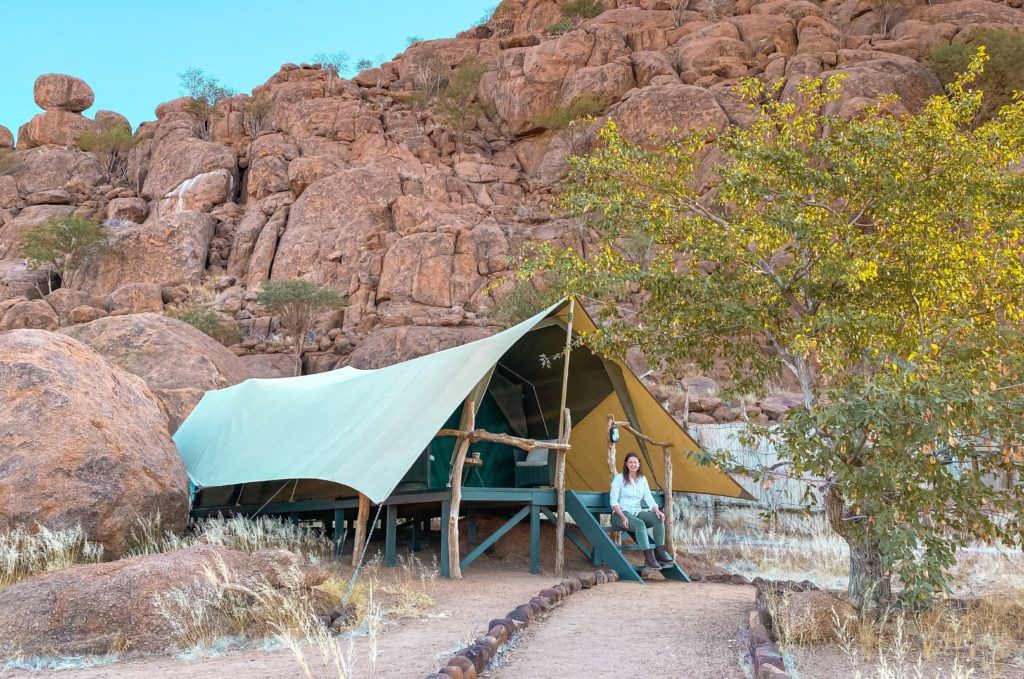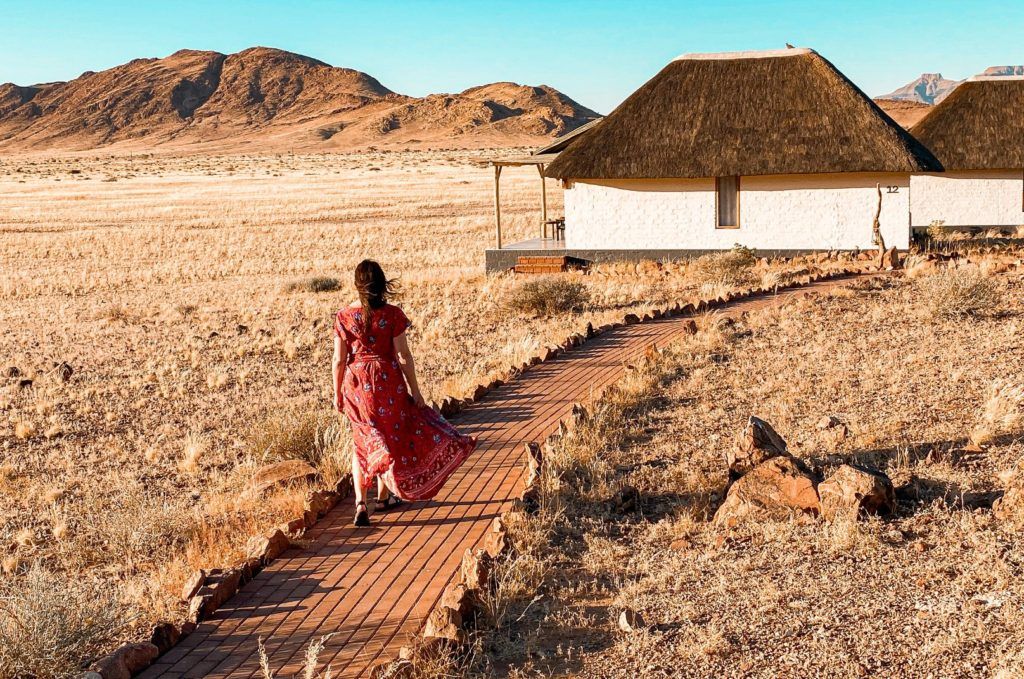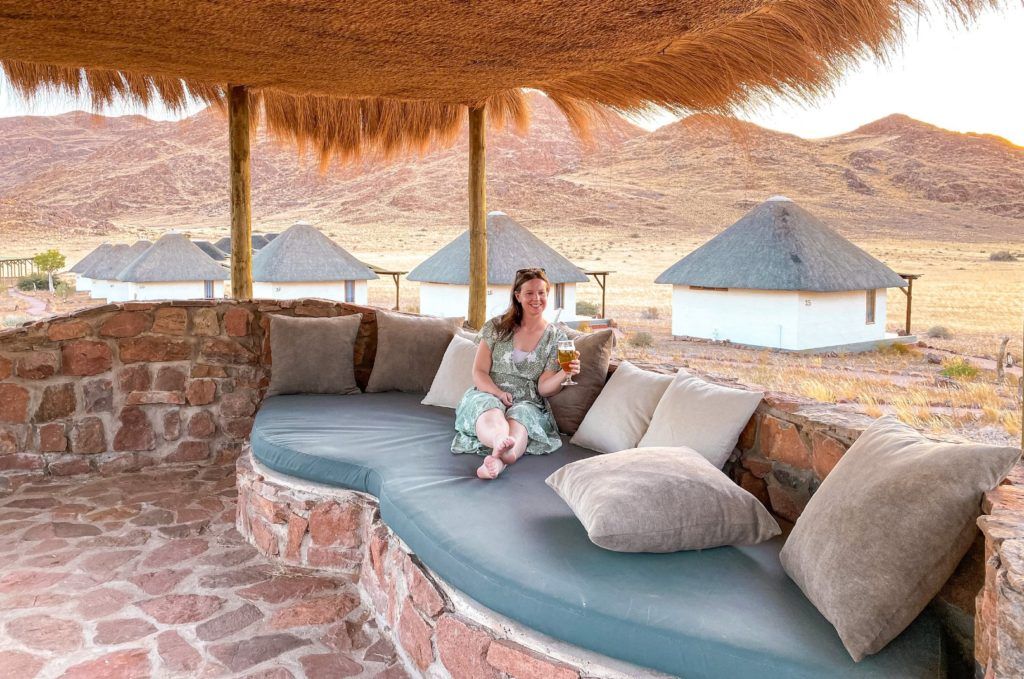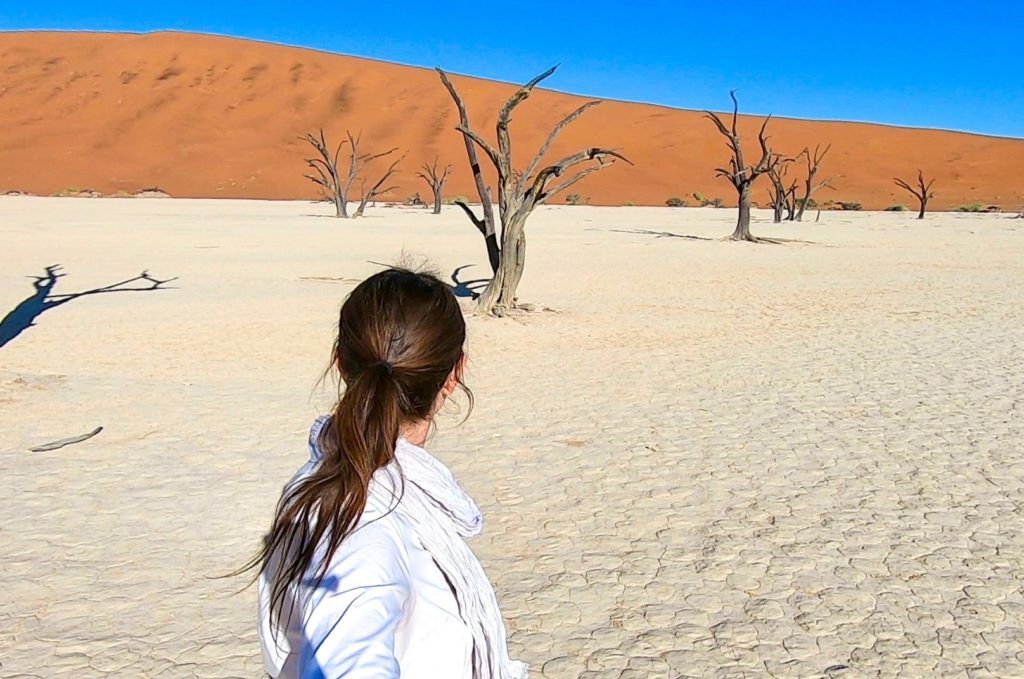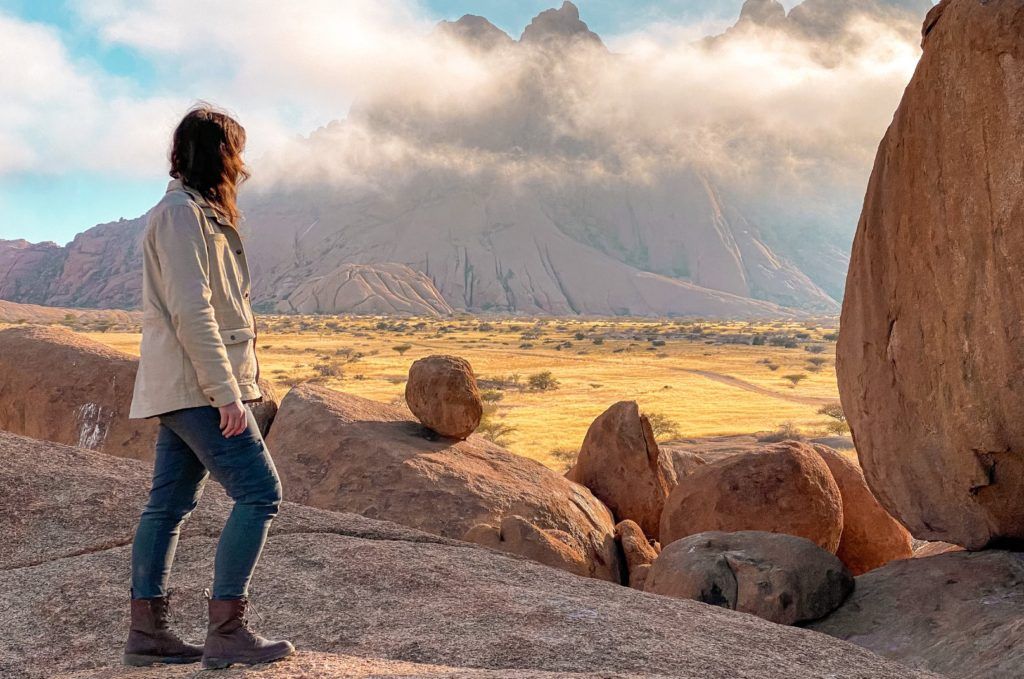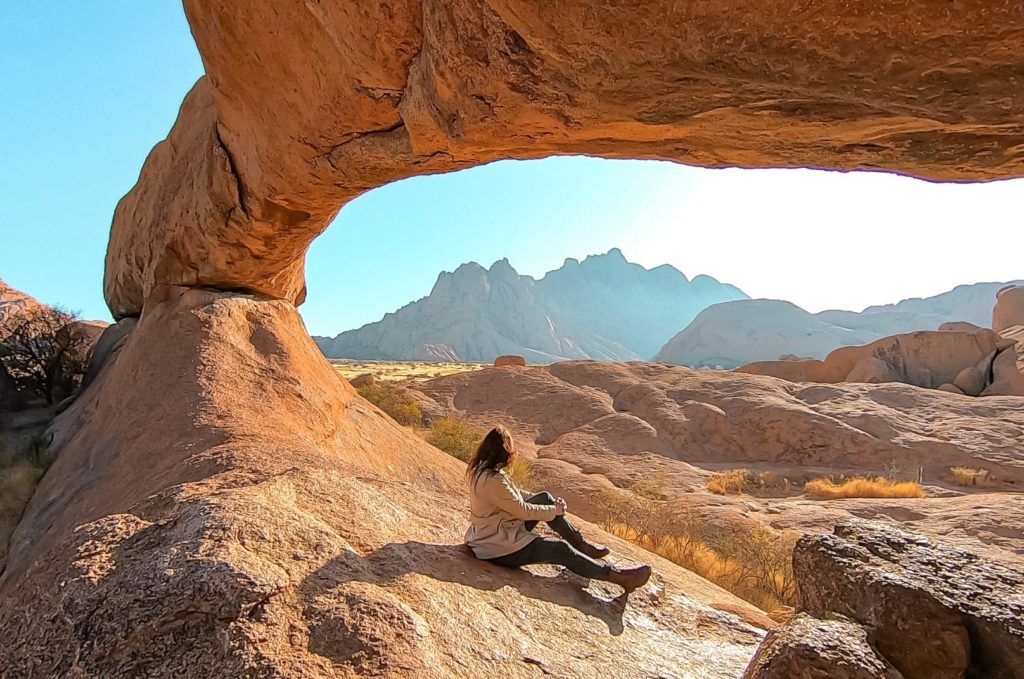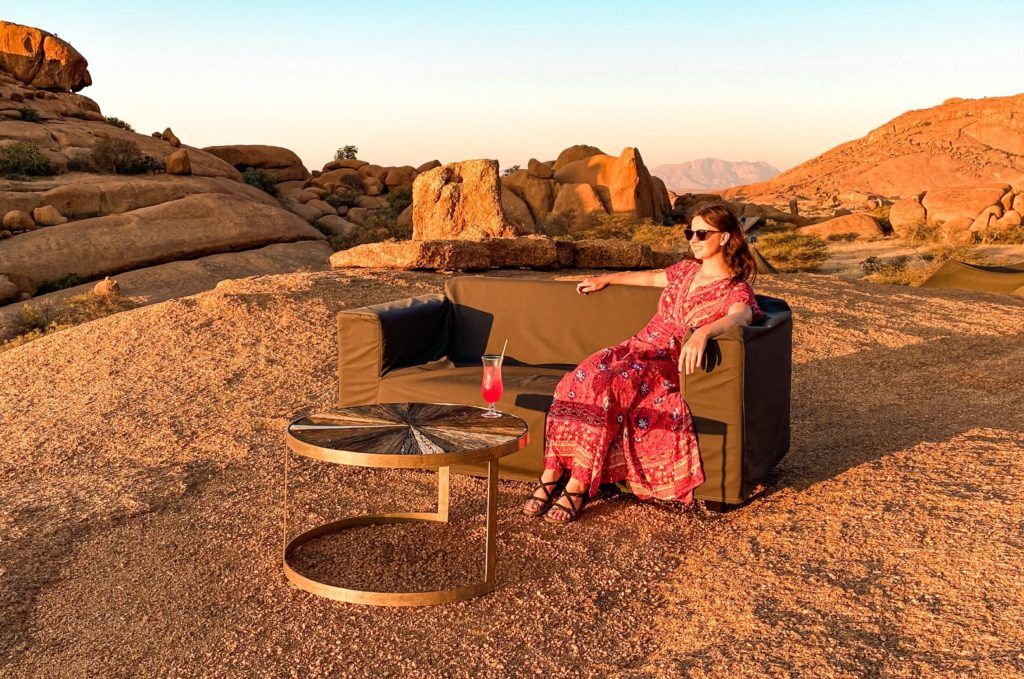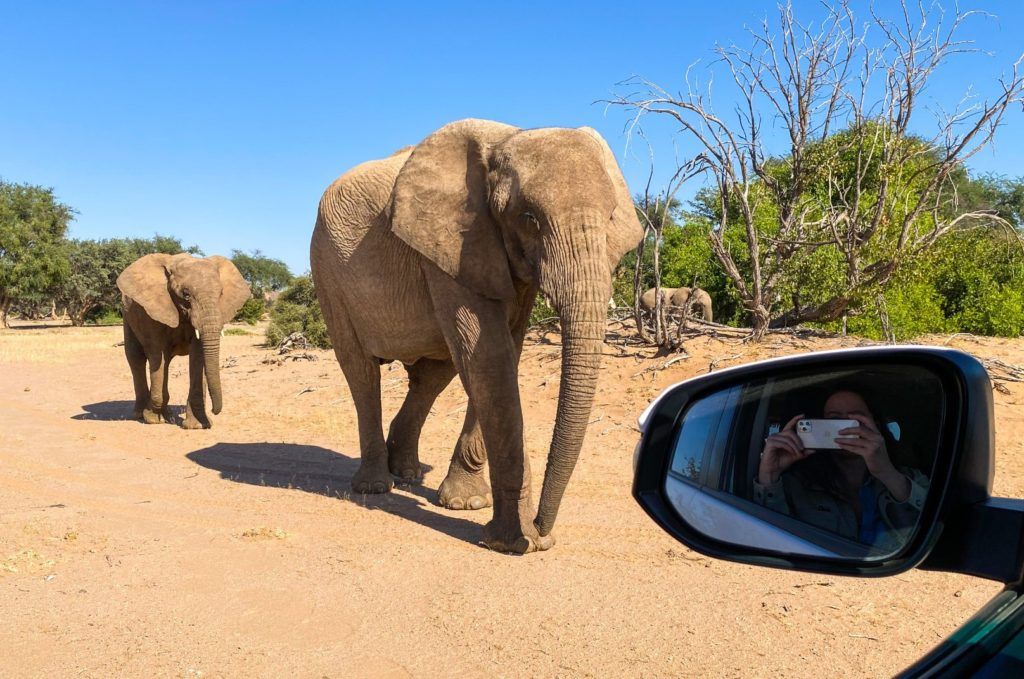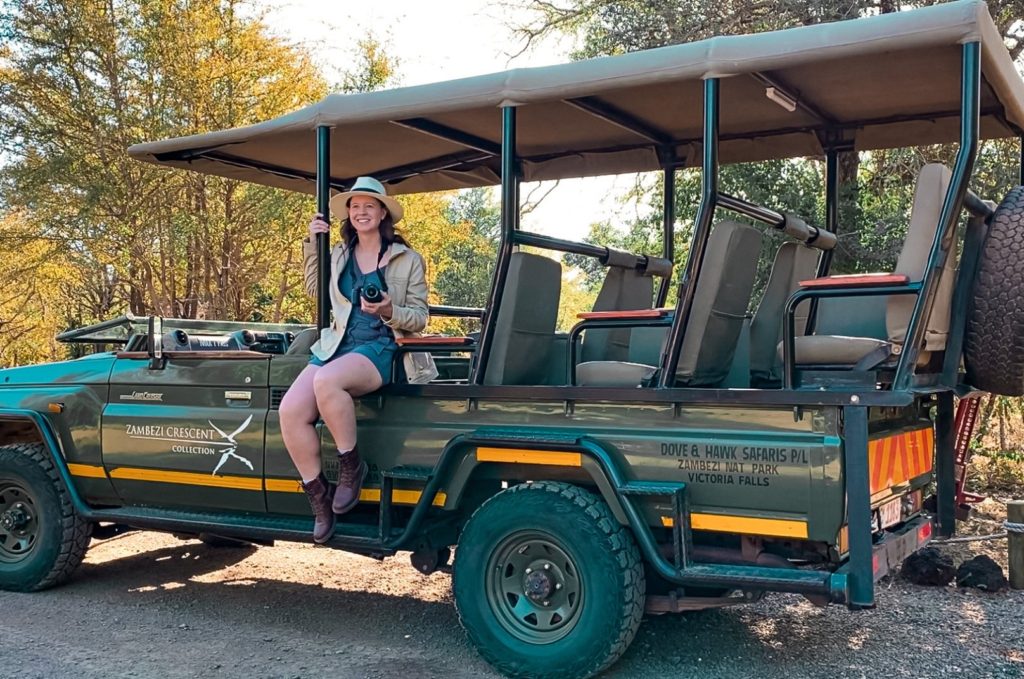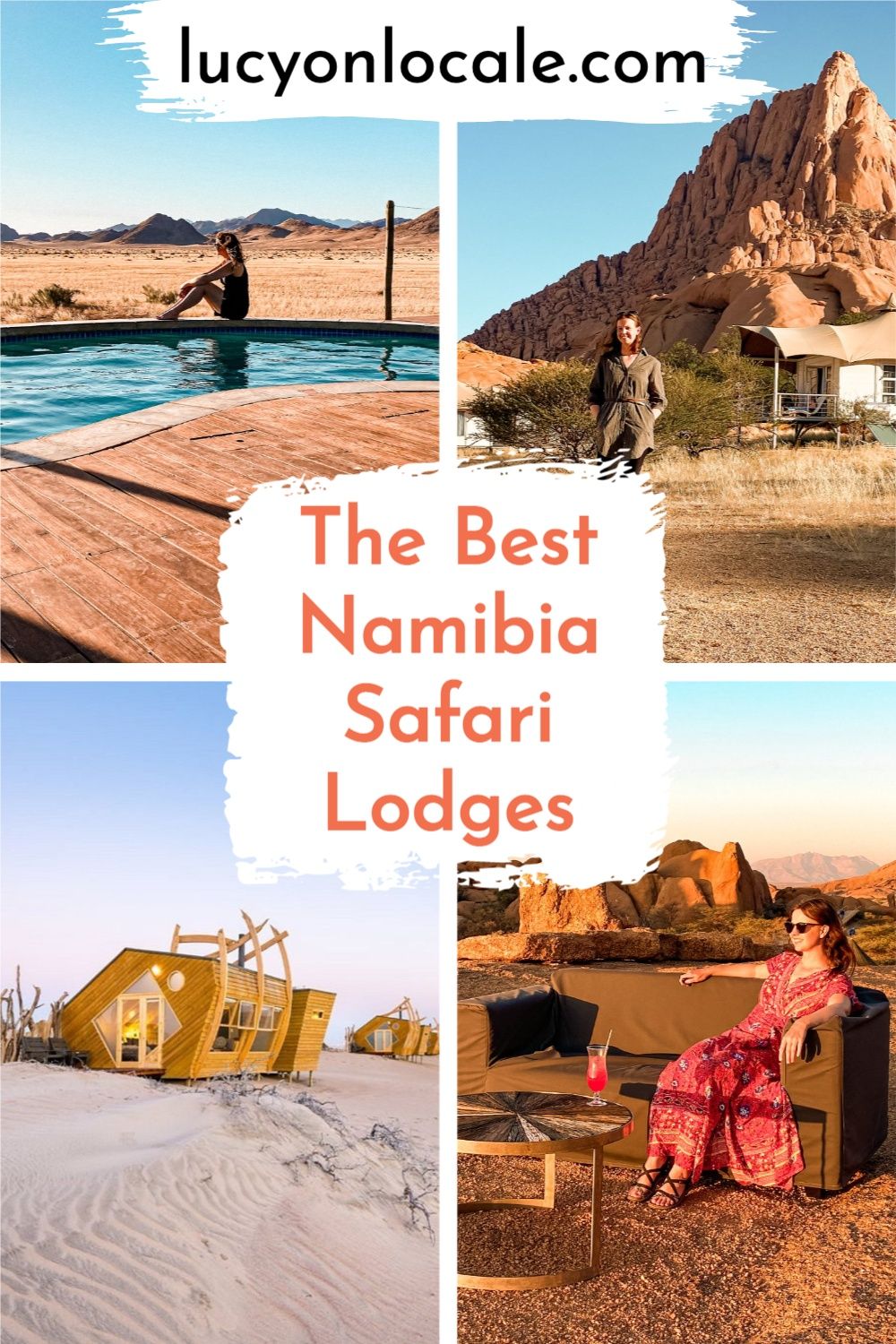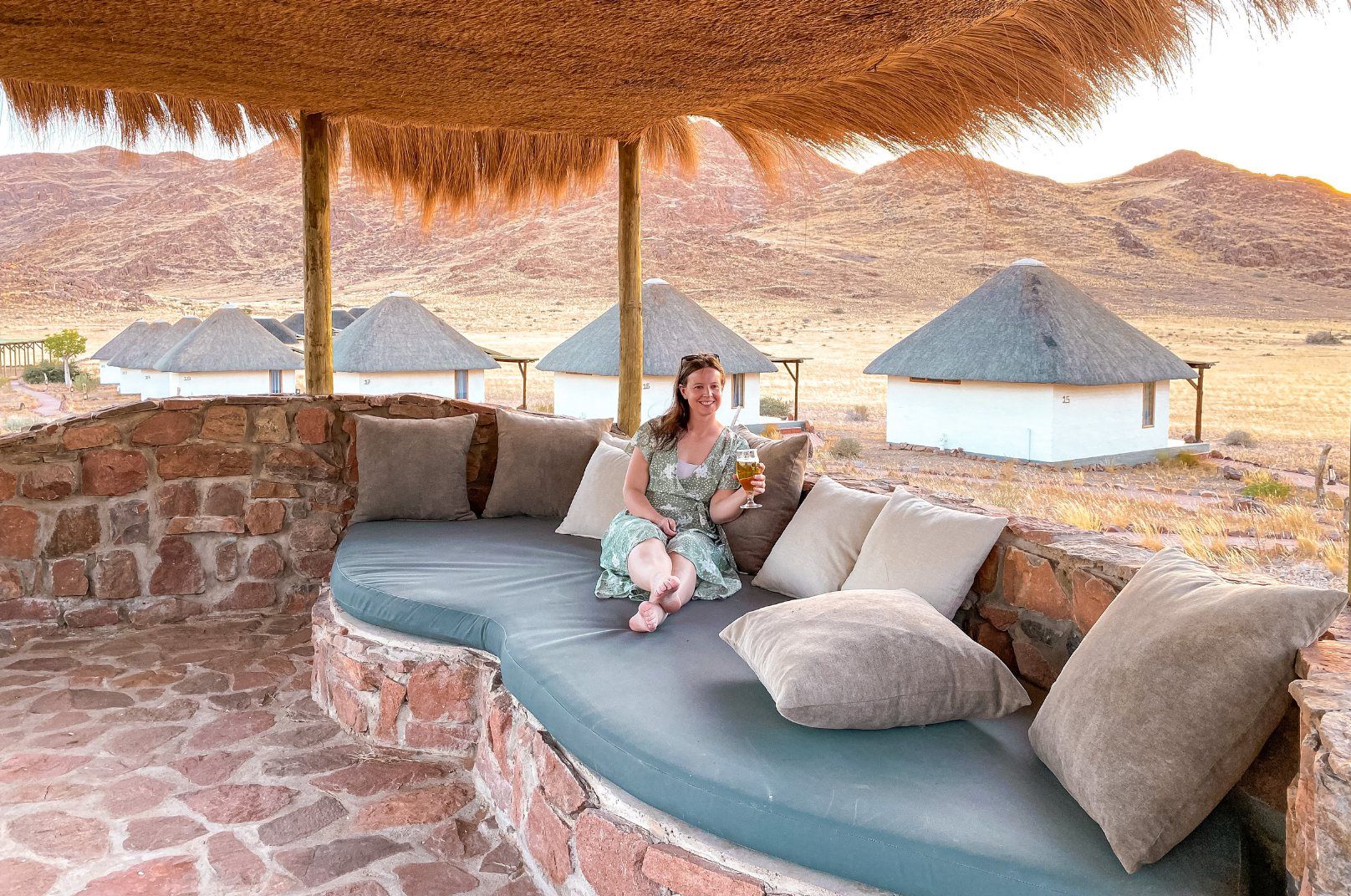
I have no idea how Namibia has stayed under the radar because this is one of the best adventure destinations in the world. So from desert oases to tented camps, I’ve rounded up the top Namibia safari lodges.
The Ultimate Namibia Travel Guide
To plan the rest of your safari, check out my safari packing list, the best months for an African safari, what to budget for a safari, and things to consider when selecting a safari lodge.
Here are the best Namibia safari lodges for your next adventure!

Spitzkoppen Lodge
Spitzkoppen Lodge
Spitzkoppe
Spitzkoppe is a group of granite peaks called the “Matterhorn of Namibia,” and Spitzkoppen Lodge is built on and around these giant boulders! The all-glass dining space and bar make you feel like you’re on top of the world, you’ll have a private luxury bungalow, and the pool is designed to look like a natural rock pool.

Okonjima Plains Camp
Okonjima Nature Reserve
This lodge is part of the Okonjima Nature Reserve, which is famous for its leopards, brown hyenas, pangolins, and The AfriCat Foundation, an organization that protects large cats. Visiting this nature reserve directly supports the critical work being done by The AfriCat Foundation.

Twyfelfontein Adventure Camp
Twyfelfontein Adventure Camp
Twyfelfontein
This tented camp has stunning views, a gorgeous pool, and delicious food that’s cooked on a grill in front of you. Twyfelfontein is home to one of Africa’s largest concentrations of petroglyphs, and this lodge is ideally located for finding desert-adapted elephants.

Desert Homestead Lodge
Sossusvlei
Get ready to fall in love with one of my favorite accommodations EVER! This stunning property has multiple pools, incredible dining, spacious private bungalows, and an on-site watering hole for wildlife viewing. Plus, you’ll be close to the famous Sossusvlei salt pan and dunes.

Zannier Hotels Omaanda
Ondekaremba
This lodge is close to Windhoek (where you’ll fly in and out of), so this is the perfect starting or end point of your trip. Your luxury bungalow will have a private terrace with stunning views, and you’ll never want to leave the pool area.

Shipwreck Lodge
Skeleton Coast
The Skeleton Coast is often called the “end of the Earth” because massive dunes drop into the ocean. You can see lions stalking seals, elephants wading into the sea, and boat graveyards. This lodge is the best (and one of the only) accommodations in this remote part of the country.

Onguma Safari Camps
Etosha National Park
Onguma Safari Camps has the best accommodations near Etosha National Park because of their on-site watering holes, location, staff, and amenities. You can choose the Forest Camp, Bush Camp, Tented Camp, The Fort, or a campsite.

Chobe Water Villas
Caprivi
You’ll love this boutique waterfront lodge at the eastern tip of the famous Caprivi Strip, now known as the Zambezi Region. You’ll be able to do land and water safaris in the Namibian Kasika Conservancy and Chobe National Park.

Shop My Safari Essentials

What do you think are the best Namibia safari lodges? Share with us in the comments!

For Planning The Rest Of Your Safari

Recommended Tours in Namibia

Frequently Asked Questions
Is Namibia good for safari?
Yes!
Namibia is home to deserts, mountains, incredible safari lodges, national parks, dreamy beach towns, and some of the best wildlife viewing in Sub-Saharan Africa. So whether you’re climbing sand dunes in Sossusvlei or tracking rhinos in Etosha National Park, this Namibia luxury safari guide has everything you need to plan an epic trip!
Fun Fact: Namibia has one of the lowest population densities in the world, which means this is one of the best destinations to escape the crowds.
When To Go:
Namibia is a desert country – one of the driest places in Sub-Saharan Africa. July – October are the driest months of the year and the peak travel season. Wildlife will gather by the hundreds around water holes, meaning these months have some of the best game viewings anywhere in Africa. These months have the highest prices and crowds, so book your lodge and tours as far in advance as possible. In July and August, daytime temperatures average in the 60s and 70s, and nighttime temperatures can drop below freezing, so bring layers. September and October nights are warmer, but you’ll still want a jacket.
May and June are the shoulder months. The rains will have stopped, the landscape will be lush, and wildlife will be easily visible at waterholes (though not as high a concentration as in July – October). Travel costs will be less during these months, and the safari lodges and destinations won’t be overrun with tourists. Daytime temperatures range from the 60s to 80s, with nighttime temperatures falling below freezing in June, so bring layers for the mornings and evenings.
November, February, and March are the rainy and off-season months. It will be wet and humid, and wildlife will be hard to see because they won’t need to gather at watering holes. You can score some great accommodation deals during these months, though, and it can feel like you have the entire country to yourself.
December, January, and April are the best months for bird watching. These are the months directly after the rainy months, when the weather will be drier, the skies clearer, and the feeding conditions are ideal for water birds. These months have drastic temperature changes from night to day, so bring shorts, pants, short-sleeve shirts, and jackets.
What are the game reserves in Namibia?
Etosha National Park is the top place to visit in Namibia. Namibia is home to deserts, mountains, incredible safari lodges, national parks, dreamy beach towns, and some of the best wildlife viewing in Sub-Saharan Africa. So here are more most-visit places in Namibia:
1.Sossusvlei
2. The Caprivi Strip
3. Spitzkoppe
4. Epupa Falls
5. Okonjima Nature Reserve
6. Twyfelfontein
7. Swakopmund
8. Walvis Bay
9. Skeleton Coast
Where is Namib Desert Lodge?
The Namib Desert Lodge is located just north of the town of Sesriem, close to the famous Sossusvlei dunes and salt pan.
When did Habitas Namibia open?
Originally founded in 1964 by Laurence Rockefeller, Rosewood Little Dix Bay closed in 2016 to undergo a complete renovation, reopening in January 2020 as the Habitas Namibia.Located just 45 minutes from Windhoek Hosea Kutako International Airport, Habitas Namibia is billed as a conservation project set on over 50,000 hectares of land that was formerly used as a hunting estate. Now, the property is a wildlife reserve and visitors can track animals on foot with local San tribesmen or on daily safari drives. Other activities include mountain biking, outings with the anti-poaching unit and stargazing.
What is the best time to go on safari?
The best time to go on safari in almost every safari destination is the dry season from June – October. This is when wildlife will be most visible and easy to find because they’ll congregate around water holes. These are the winter months, so bring warm clothes and layers.
If you want to see a specific wildlife event – such as The Great Migration – you’ll have a narrow window of time when you can witness this, and it’s always one of the most expensive and crowded safari sights to see.
If you’re going on safari for birding, the month immediately after a destination’s rainy season is usually the best time to visit.
What can you do in Namibia in a week?
If you only have a week in Namibia, I recommend spending two nights in Sossusvlei, two nights in Spitzkoppe, and three nights in Etosha National Park.
When To Go:
Namibia is a desert country – one of the driest places in Sub-Saharan Africa. July – October are the driest months of the year and the peak travel season. Wildlife will gather by the hundreds around water holes, meaning these months have some of the best game viewings anywhere in Africa. These months have the highest prices and crowds, so book your lodge and tours as far in advance as possible. In July and August, daytime temperatures average in the 60s and 70s, and nighttime temperatures can drop below freezing, so bring layers. September and October nights are warmer, but you’ll still want a jacket.
May and June are the shoulder months. The rains will have stopped, the landscape will be lush, and wildlife will be easily visible at waterholes (though not as high a concentration as in July – October). Travel costs will be less during these months, and the safari lodges and destinations won’t be overrun with tourists. Daytime temperatures range from the 60s to 80s, with nighttime temperatures falling below freezing in June, so bring layers for the mornings and evenings.
November, February, and March are the rainy and off-season months. It will be wet and humid, and wildlife will be hard to see because they won’t need to gather at watering holes. You can score some great accommodation deals during these months, though, and it can feel like you have the entire country to yourself.
December, January, and April are the best months for bird watching. These are the months directly after the rainy months, when the weather will be drier, the skies clearer, and the feeding conditions are ideal for water birds. These months have drastic temperature changes from night to day, so bring shorts, pants, short-sleeve shirts, and jackets.
How many days do you need in Namibia?
If you only have a week in Namibia, I recommend spending two nights in Sossusvlei, two nights in Spitzkoppe, and three nights in Etosha National Park.
If you have two weeks, add two nights at Okonjima Nature Reserve, two nights in Twyfelfontein, one night in Swakopmund and Walvis Bay, and two nights in the Skeleton Coast.
If you have three weeks, add The Caprivi Strip.
What is the best time of year to visit Namibia?
Namibia is a desert country – one of the driest places in Sub-Saharan Africa. July – October are the driest months of the year and the peak travel season. Wildlife will gather by the hundreds around water holes, meaning these months have some of the best game viewings anywhere in Africa. These months have the highest prices and crowds, so book your lodge and tours as far in advance as possible. In July and August, daytime temperatures average in the 60s and 70s, and nighttime temperatures can drop below freezing, so bring layers. September and October nights are warmer, but you’ll still want a jacket.
May and June are the shoulder months. The rains will have stopped, the landscape will be lush, and wildlife will be easily visible at waterholes (though not as high a concentration as in July – October). Travel costs will be less during these months, and the safari lodges and destinations won’t be overrun with tourists. Daytime temperatures range from the 60s to 80s, with nighttime temperatures falling below freezing in June, so bring layers for the mornings and evenings.
November, February, and March are the rainy and off-season months. It will be wet and humid, and wildlife will be hard to see because they won’t need to gather at watering holes. You can score some great accommodation deals during these months, though, and it can feel like you have the entire country to yourself.
December, January, and April are the best months for bird watching. These are the months directly after the rainy months, when the weather will be drier, the skies clearer, and the feeding conditions are ideal for water birds. These months have drastic temperature changes from night to day, so bring shorts, pants, short-sleeve shirts, and jackets.

This article about the best Namibia safari lodges is not a sponsored post, and the thoughts and opinions expressed in this post are entirely my own. Some of the links in this post about the best Namibia safari lodges are affiliate links, and, at no cost to you, I may earn a small commission from this post about the best Namibia safari lodges.
 Travel Shop
Travel Shop Merch
Merch Travel Tips
Travel Tips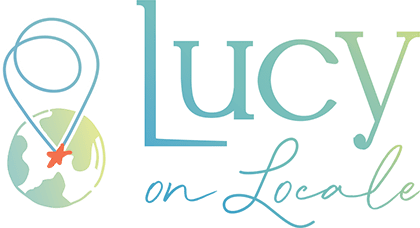
 Photography
Photography Points & Miles
Points & Miles Credit Cards
Credit Cards